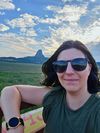Totally unreal! Camping under the solar eclipse path of totality

Approximately 44 million North Americans resided in the path of totality for the 2024 Great American Eclipse, and hundreds of thousands more traveled to the area. It was the most anticipated event of the year and kicked off camping season early. As full-time RVers, we have the privilege of parking our home where we want, when we want. Last October, we got to experience the annular solar eclipse from Albuquerque, NM. It was a dry run for the big show six months later. The total solar eclipse was happening, and we were going to be there.
But where is "there," exactly? Back in 2017 when the last total solar eclipse occurred over the US, we were home in MA. Our year was chock full of other trips, including our East Coast Road Trip and our visit to Iceland. On August 21, travel wasn't in the cards, but the country was abuzz with anticipation of the next total solar eclipse, seven years away. Who actually plans something seven years in advance? This girl, apparently. I marked the event in my Google Calendar, not even sure if I'd still be using the calendar in 2024! I expected us to head up to our beloved vacation spot, New Hampshire, or perhaps Maine or upstate New York. I envisioned renting an Airbnb and maybe inviting some friends to join us. I hoped that in early April the weather wouldn't be too cold up north.
Never in a million years could I have predicted where we would actually view the eclipse: From our RV that we didn't yet own, on a lake we had never heard of, in a state we never imagined going to. But seven years can make a big difference. I may still be using Google Calendar, but that's one of the only predictions I got right back then.
This event was our biggest "dot" on our travel itinerary this year, and we knew campsites would fill up fast. We booked a site at a KOA in Missouri about a year in advance, but the prices were jacked up like crazy and we also weren't sure we would already be that far north come April. We were trying to slow our travels this year. I decided to hold onto our booked site but continue to look and see if I could find something better. I figured time-wise, Arkansas would make sense, and honestly, with low expectations of the state, we might as well experience something epic there to make it more exciting. I looked at Google Maps to see what lied in the path of totality, narrowing my focus on the area around Hot Springs National Park. The plan was perfect; we could check off a new National Park and also view the solar eclipse.
The area has tons of federally-owned campgrounds, meaning that we had an opportunity to grab a campsite for a bargain, as opposed to all the private campgrounds that were raising their rates. The only problem was, these campgrounds wouldn't release their availability until six months before, sometimes less. We decided to be as strategic as possible:
- Keep our KOA site and plan to cancel it if we grab a site in Arkansas
- Reserve a site at the earliest possible time, which would be 6 months plus 2 weeks before the eclipse, if we reserved for 2 full weeks, with our last day being eclipse day
- Modify our reservation to shorten it if need be
I made a list of a bunch of the Army Corps of Engineers (COE) campgrounds in the area. They would all open for reservations 6 months prior, they would be on the water, and they would be inexpensive. At the minute the reservation window opened, I quickly went onto rec.gov and looked for availabilities, based on what I had prioritized in my list. First up was Crystal Springs Campground. Water and electric sites on Lake Ouachita, less than 30 minutes from Hot Springs National Park. Available sites? ...All of them. Evidently the locals who usually camp here weren't too worried about snatching a site for the eclipse. I tabbed a few of my favorite sites and ultimately decided on site 52. It backed right up to the water and was the last site before a curve, so we wouldn't have neighbors directly on our pleasure side. Once the site was confirmed, we canceled our KOA booking. Because we're VIP KOA members, we're able to cancel without a fee.
We kept thinking we would eventually shorten our stay at Crystal Springs and arrive a few days later, but we never did...until we faced a wind storm at Village Creek State Park. We delayed our arrival by one day and ended up staying at Crystal Springs for 13 days. We had grown accustomed to slower travel as we made our way through the South, and we actually looked forward to spending more time in the area. Crystal Springs was a fantastic place to hang our hats while we waited for eclipse day. We had the lake, we had hiking trails right from camp, and we had easy access to Hot Springs. We would have been happy campers here no matter what, but we had high hopes that the eclipse would be the grand finale of our stay.
The 10-day forecast came out and we got nervous.
Rain and clouds weren't just being predicted for Arkansas. They were predicted along the whole path of totality! The only thing we could do was wait.
Slowly but surely, the forecast began to look more promising.
And on April 8, we lucked out with even less cloud cover than they had predicted. Besides a few wispy clouds in the sky, we were in the clear. By the time the eclipse began at 12:30PM, most of the clouds had dissipated.
My goal for these types of events is to somehow successfully balance fun and photography. The amount of prep that goes into the photography side is intense, but I know I'll regret not having visual keepsakes. I learned a lot from October's annular eclipse, most importantly that my mirrorless camera didn't like the filter I bought and created a bunch of reflections. I wasn't surprised; I didn't have time to buy an actual solar filter and so I bought an ND filter with as many stops (dimness settings) as possible. Not having a proper solar filter is not recommended because the sun can fry the optics of the camera, but I wasn't going to be facing the camera toward the sun for too long. If I was taking a timelapse, for instance, I would definitely want more protection, but aiming the camera to the sun for a few seconds here and there has not caused harm, at least to my camera.
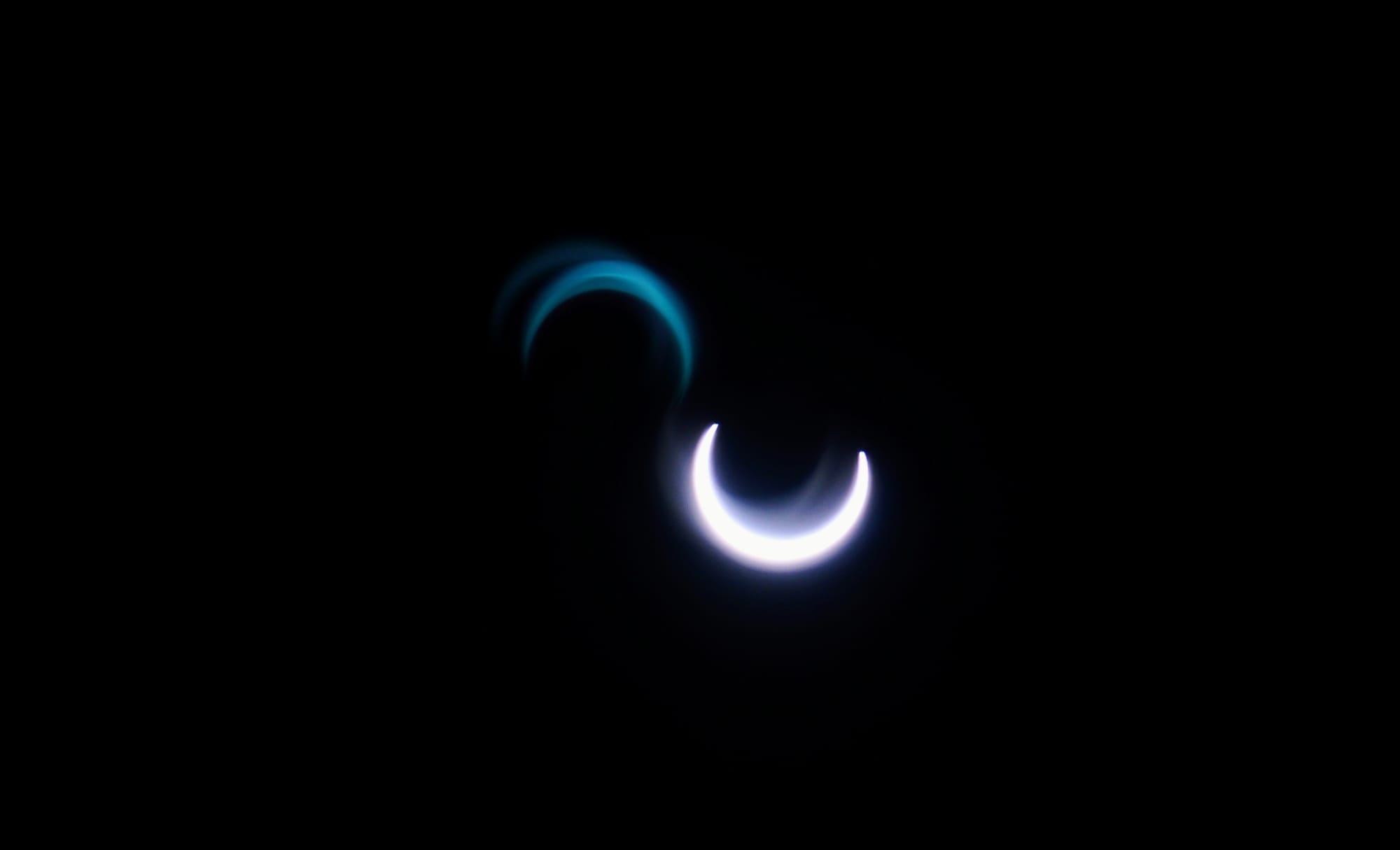
I made a note to purchase an actual solar filter in the six months between October and April, and to also consider getting a longer telephoto lens. I researched lenses thinking I might ask for one for Christmas, but all the ones I liked were far too expensive. After that, I stopped thinking about camera equipment and didn't get a solar filter either. I planned on just using my cell phone, which worked great with a wrap-around foil solar filter.
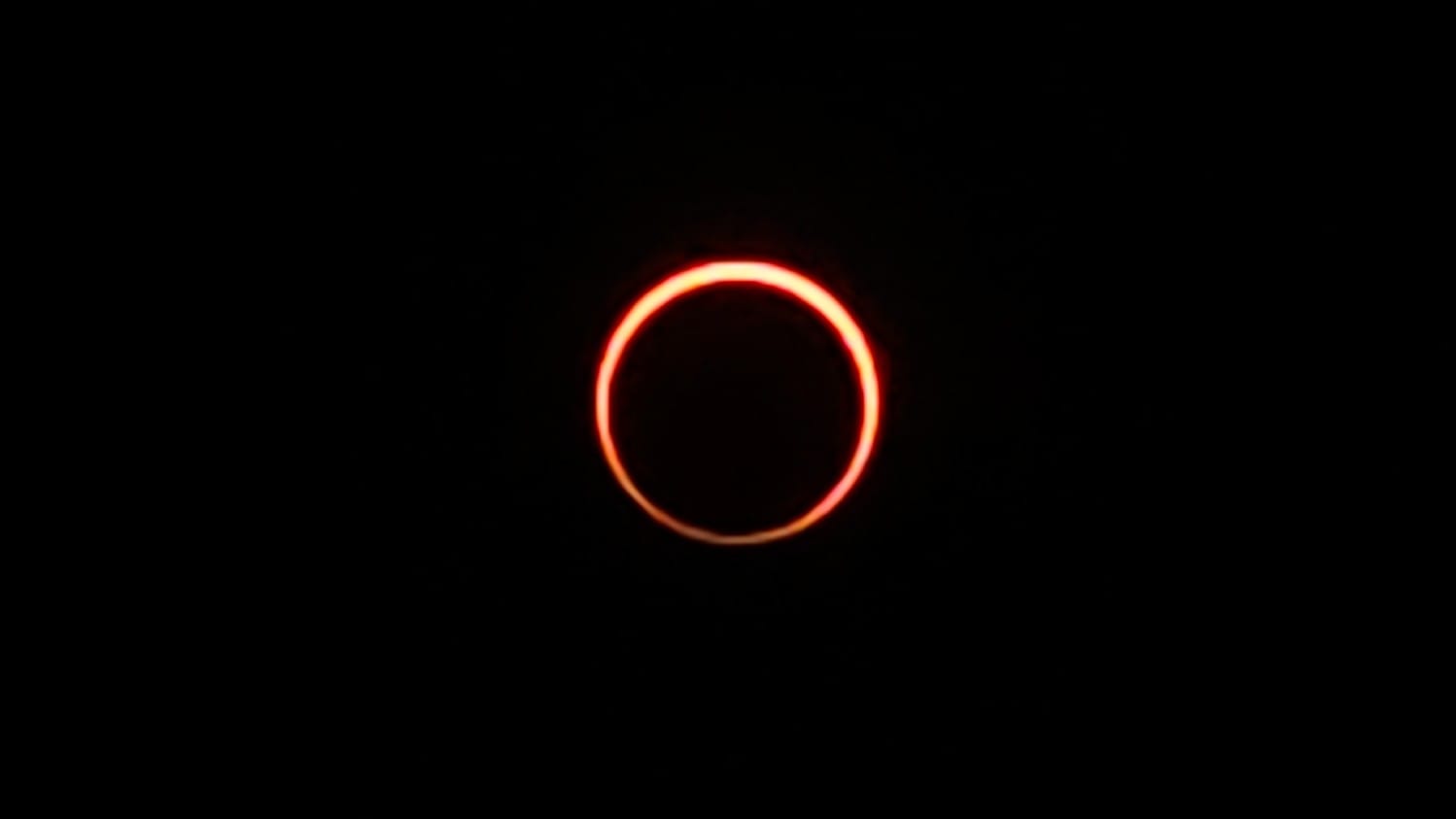
In the final days leading up to April 8, I second guessed myself. I've gotten so used to the outcomes of my photography lacking due to suboptimal equipment. I had settled for being "slightly above amateur," as I like to call myself, but was I selling myself short? Once again, it was too late to buy a solar filter, but perhaps I could give my mirrorless a second try. After all, two cameras are usually better than one when there is such a short span of time to capture something spectacular, and we would be experiencing totality for only 3 minutes and 37 seconds. I felt the pressure to really be on my game.
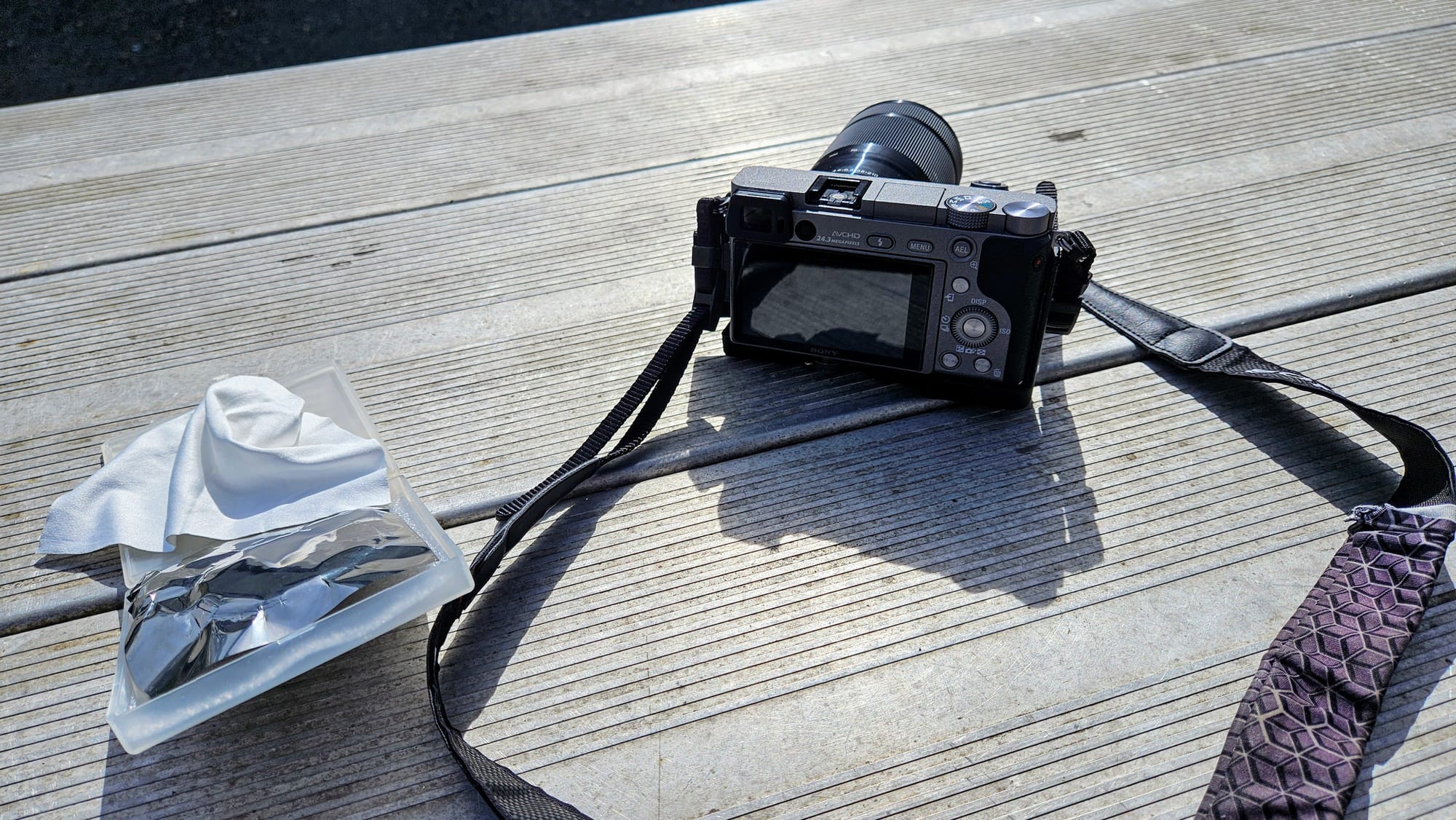
The next step was to look at the sun's positioning at the time of totality. The day before the eclipse, we went outside at 1:49PM to find the sun. The next day, in this spot, we would also see the moon!
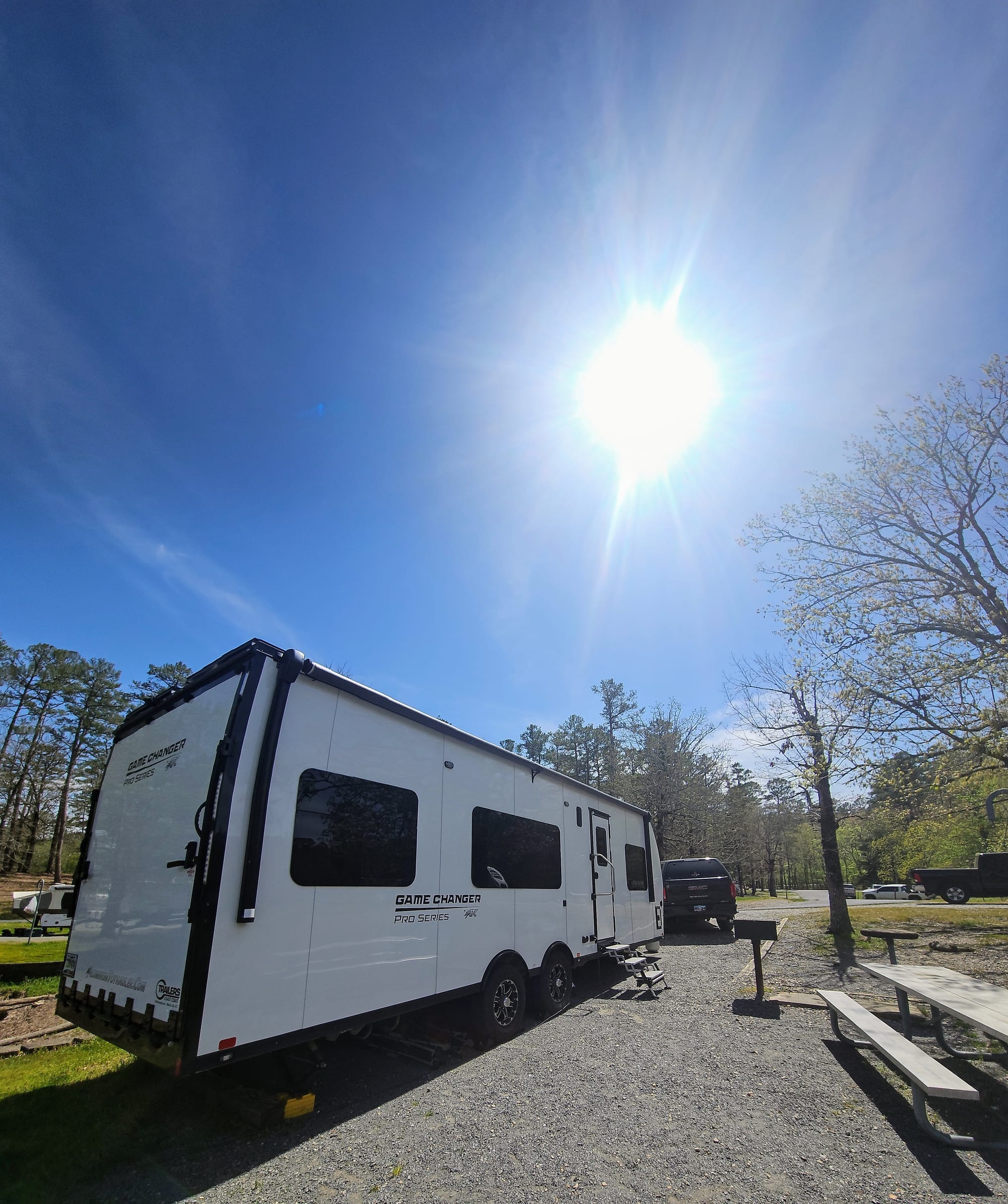
Finally, I took some foreground shots, thinking that if I somehow became better than "slightly above amateur," I could use them as part of a composite. The total eclipse over our RV would be a killer shot.
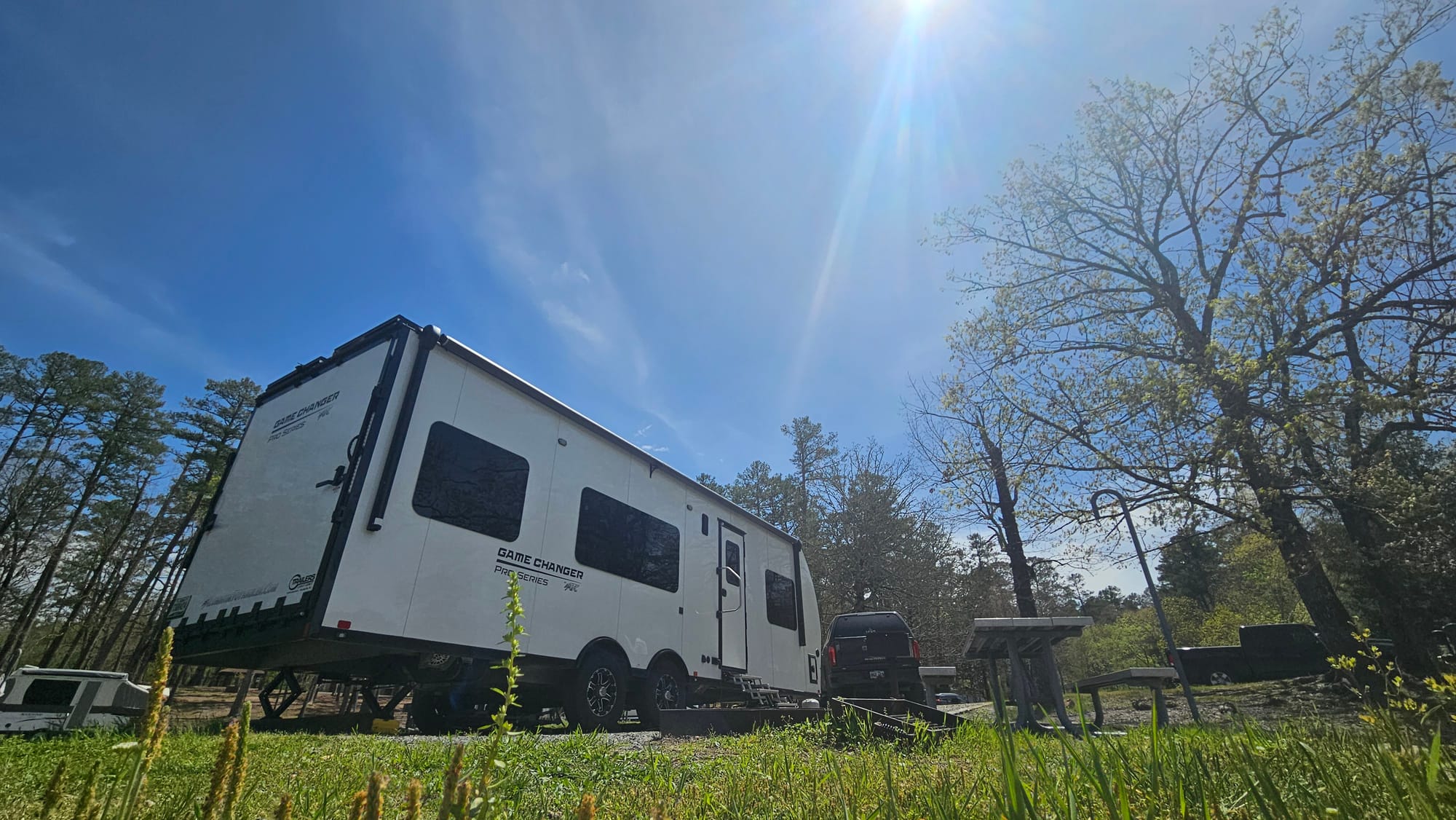
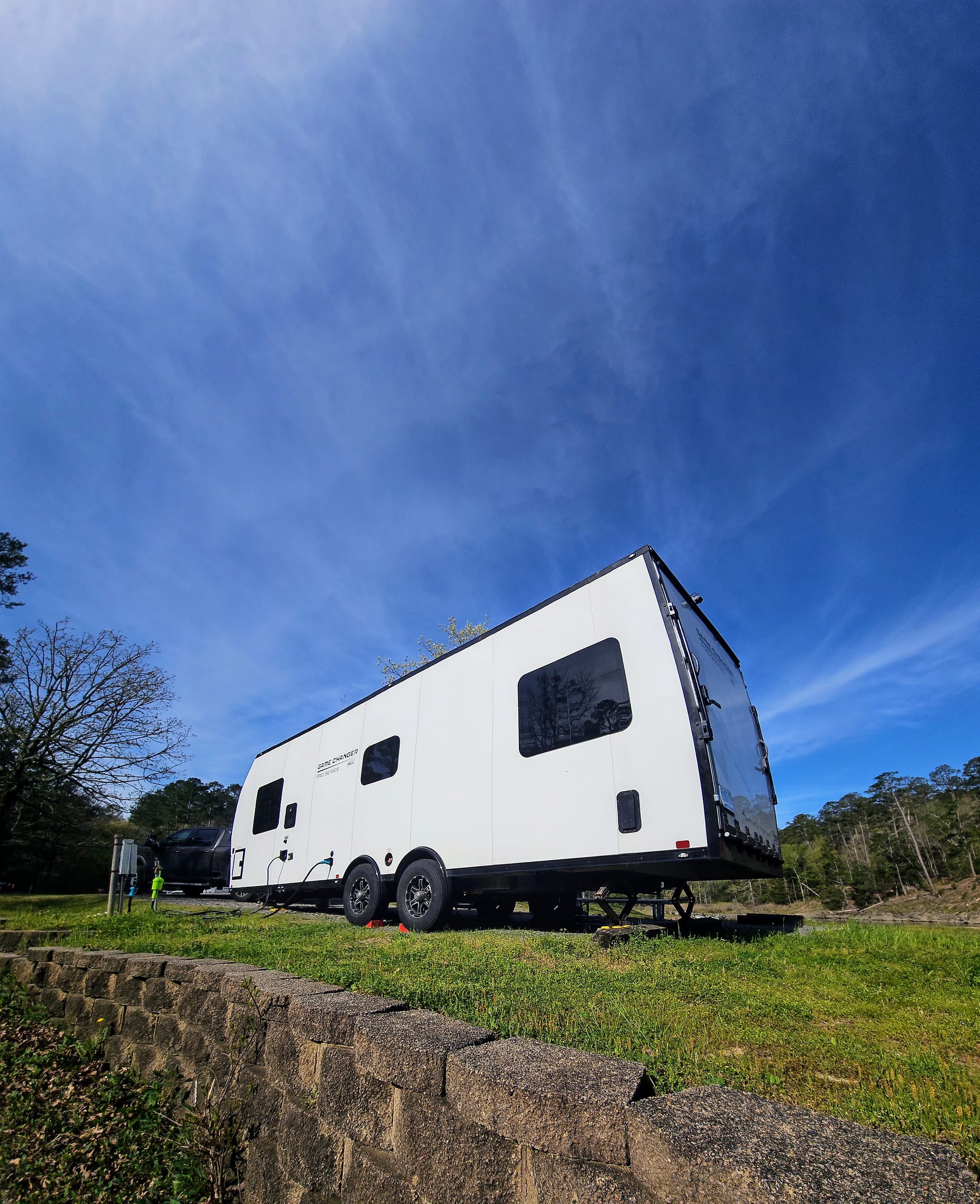
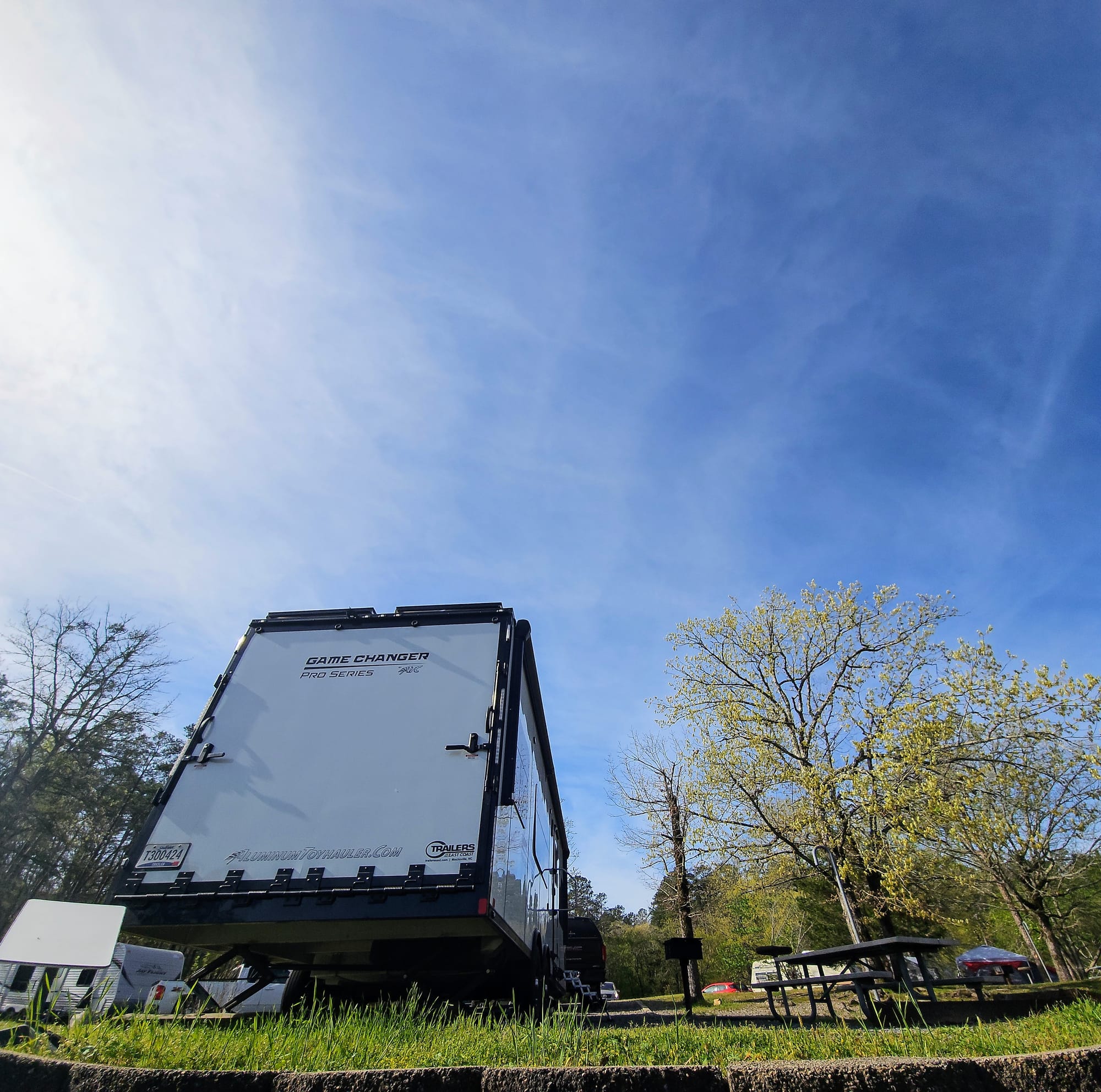
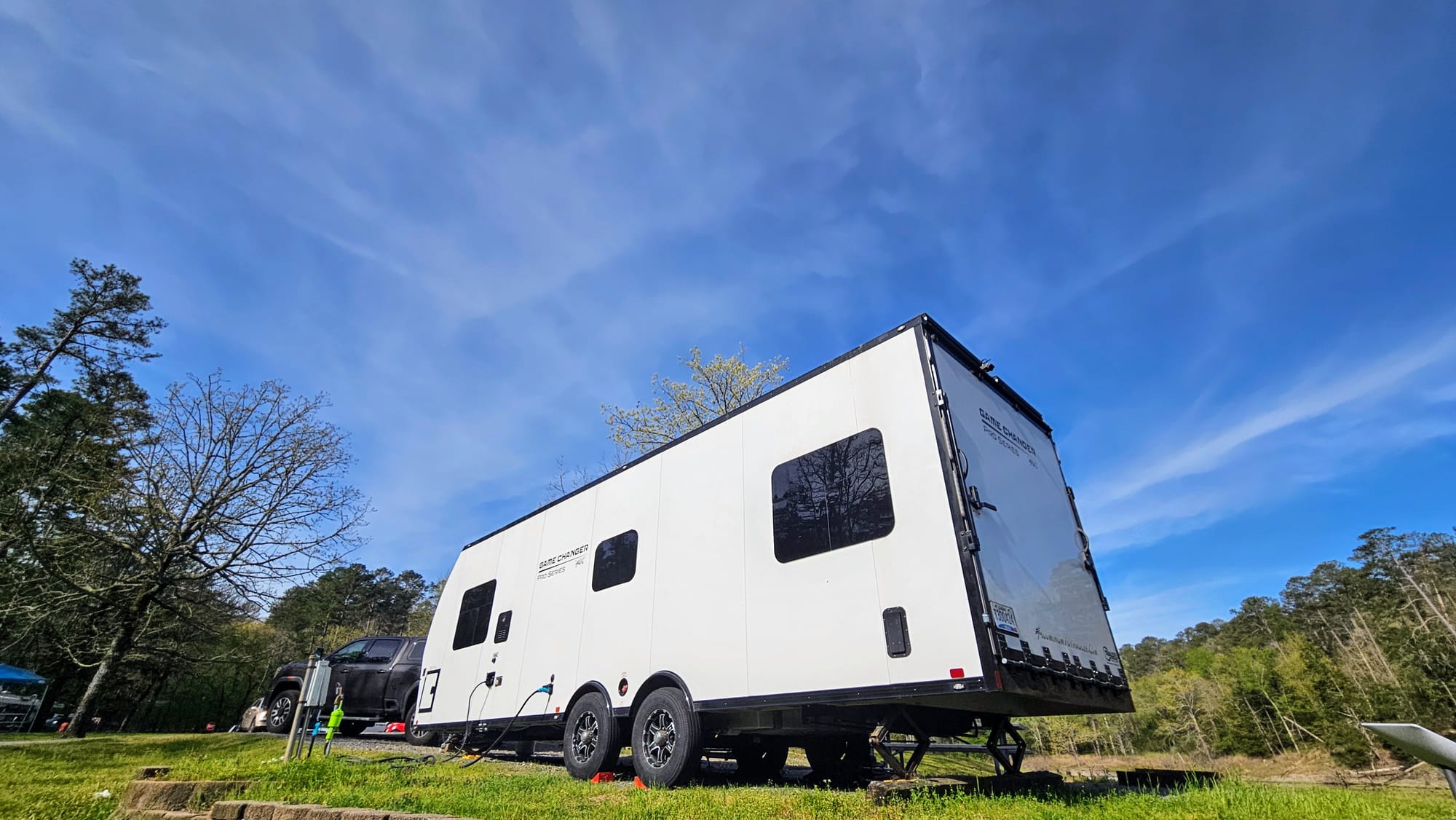
Preparation wasn't only reserved for photography. We needed to ensure that our eclipse glasses were still functioning properly. We had bought reusable glasses for the annular solar eclipse, knowing that we would need them again. They worked great in October, but we needed to make sure they didn't get any scratches or perforations in their lenses during their six months in storage.
Lastly, we needed to choose our outfits. Word spread that wearing red or green would allow for some extra fun during the lower light intervals because the rods in our eyes wouldn't be adjusted yet. Red and green were supposed to give off a cooler hue. I was ready.
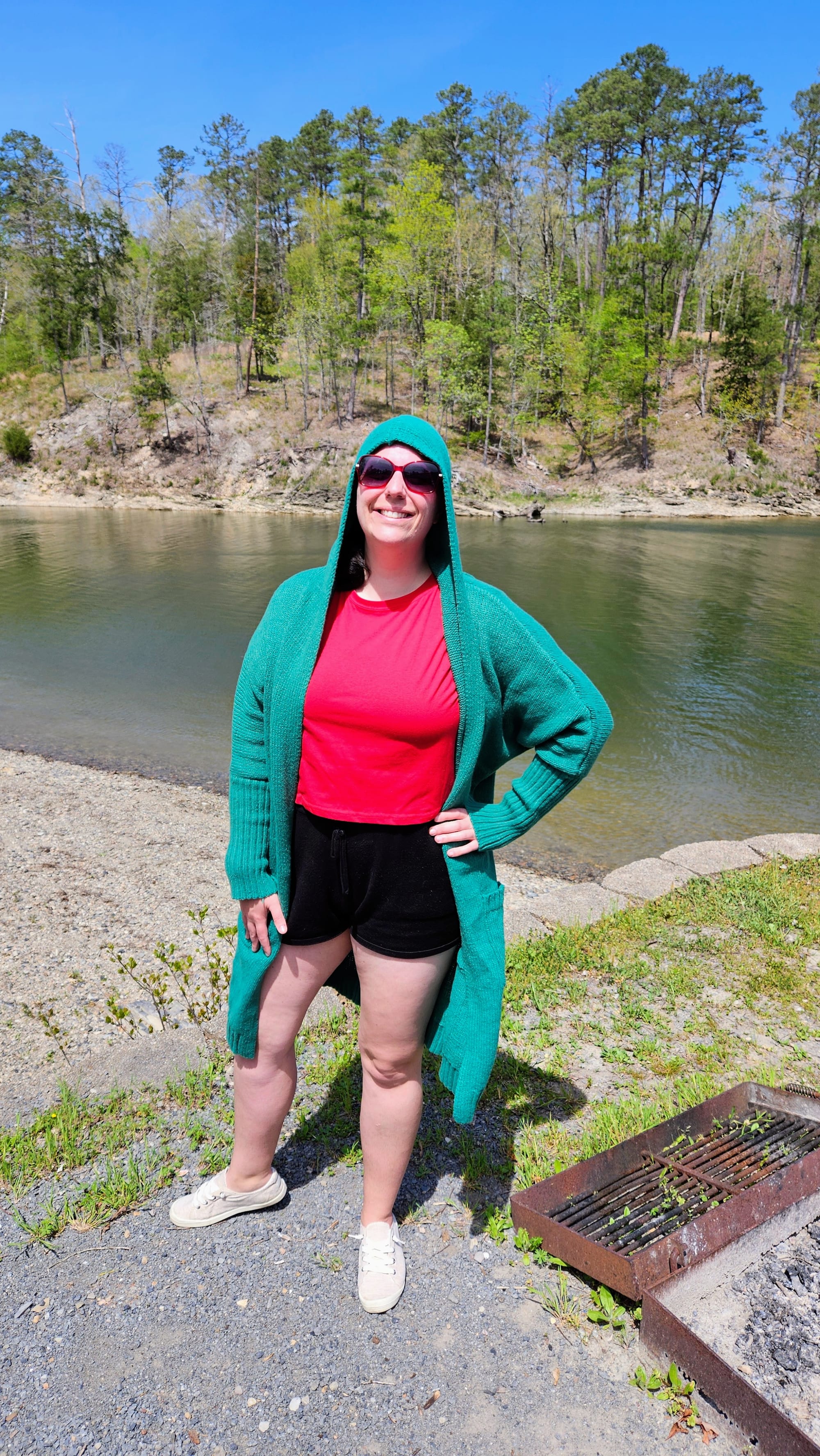
Anthony said I looked like an Eclipsemas Elf. Also, why does my knee look like George Banks on Vatsnik?
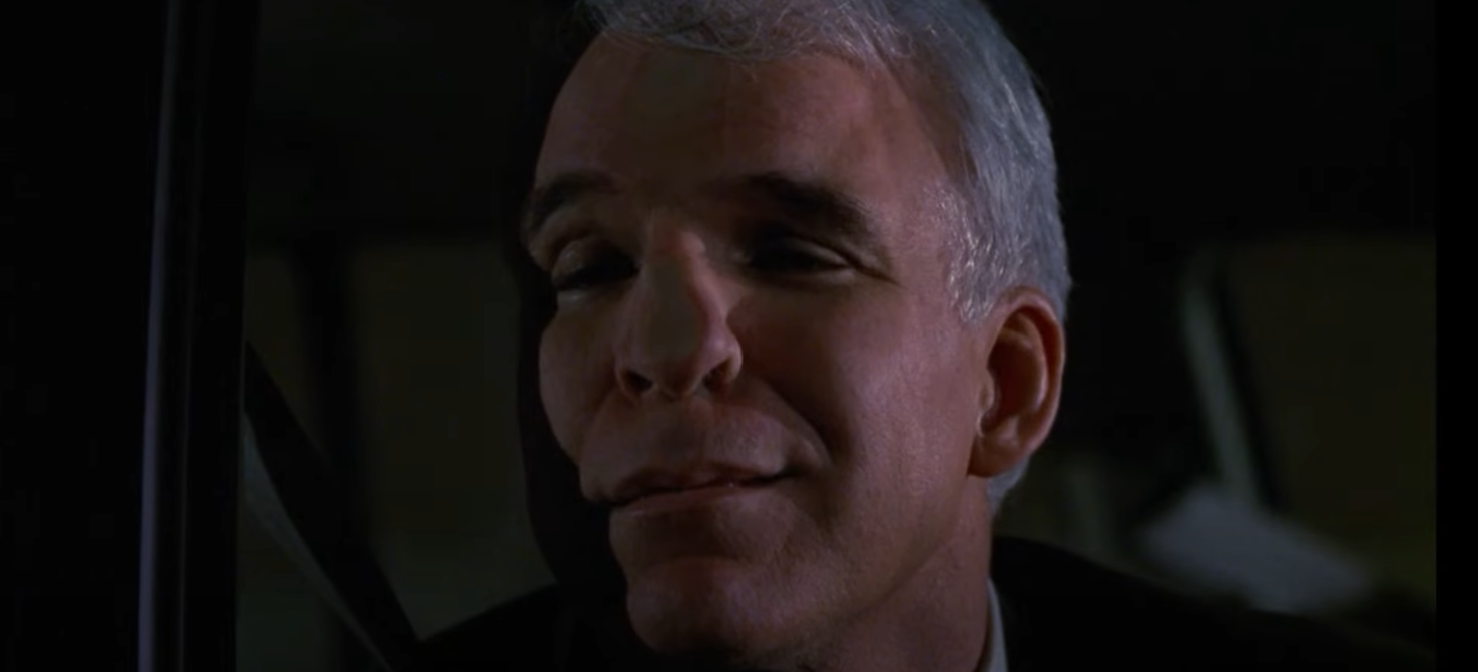
We will spoil the surprise right now. We noticed nothing weird about our clothes. Our neighbors in the site next to us also dressed in red and green. They saw nothing either.
Thankfully, none of that mattered, because the eclipse itself was enough to keep us thoroughly mesmerized. We decided to cook lunch on the grill as we awaited totality. Anthony cooked while I took photos of the first bits of sun getting obscured.
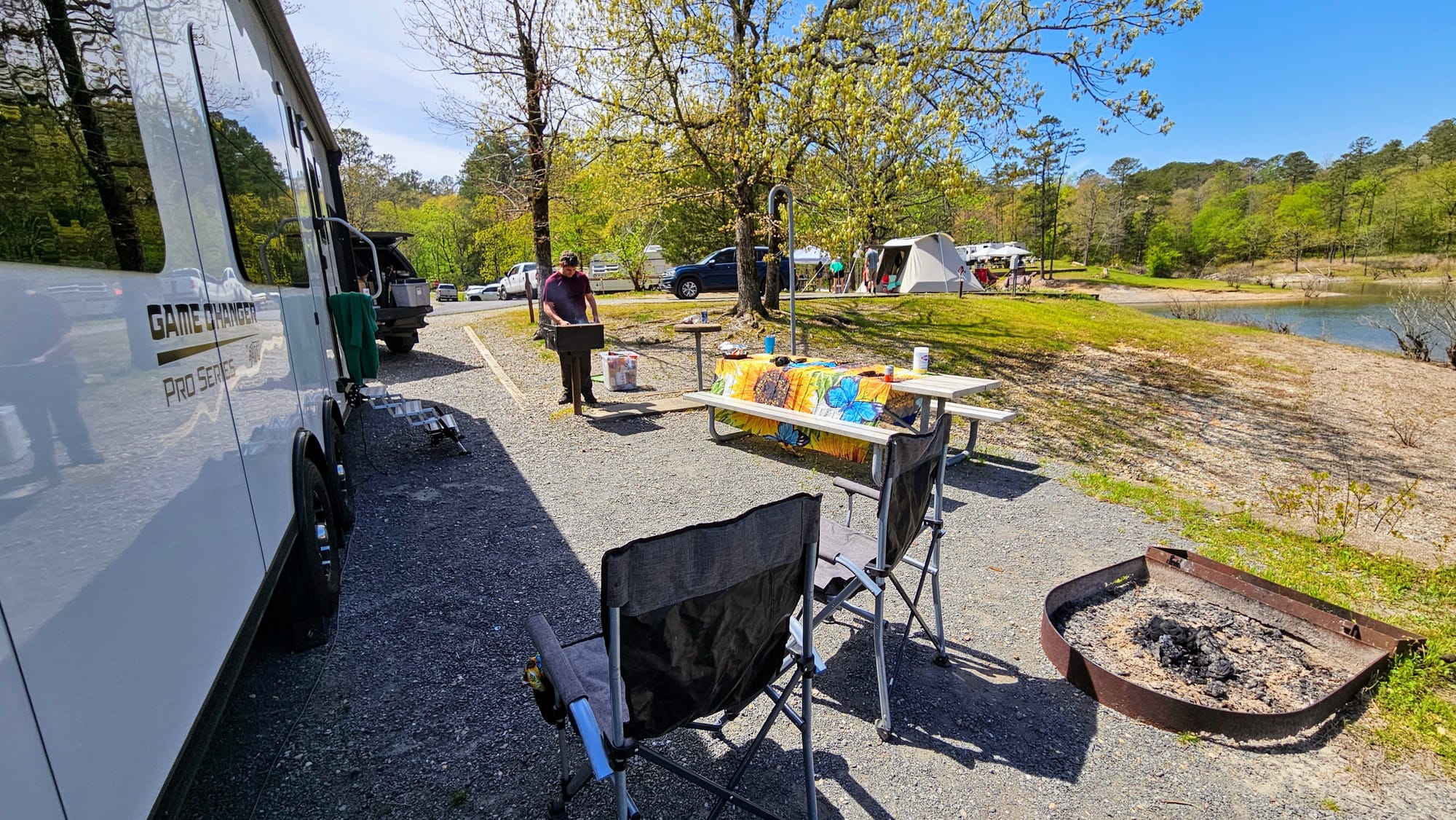
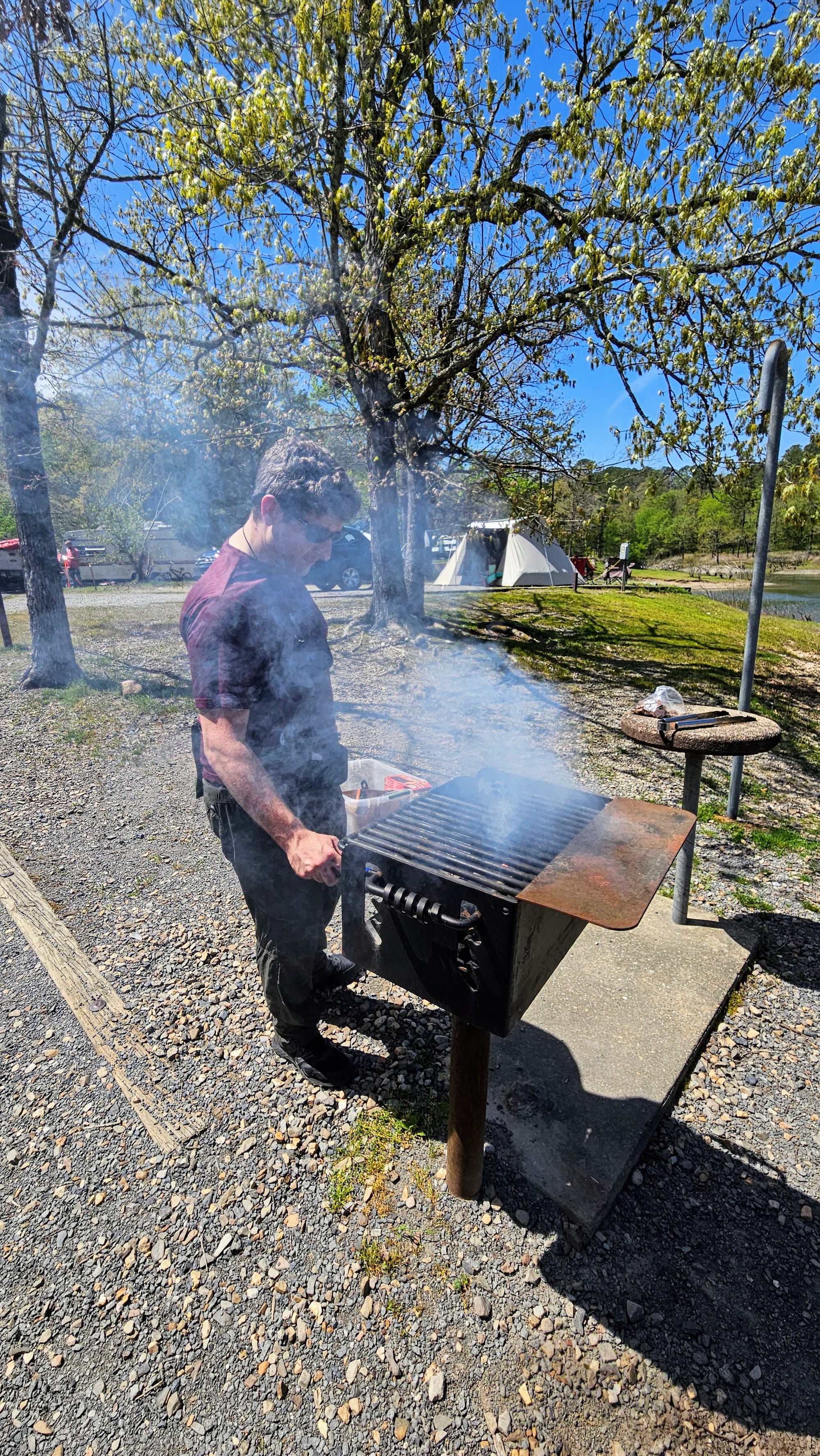
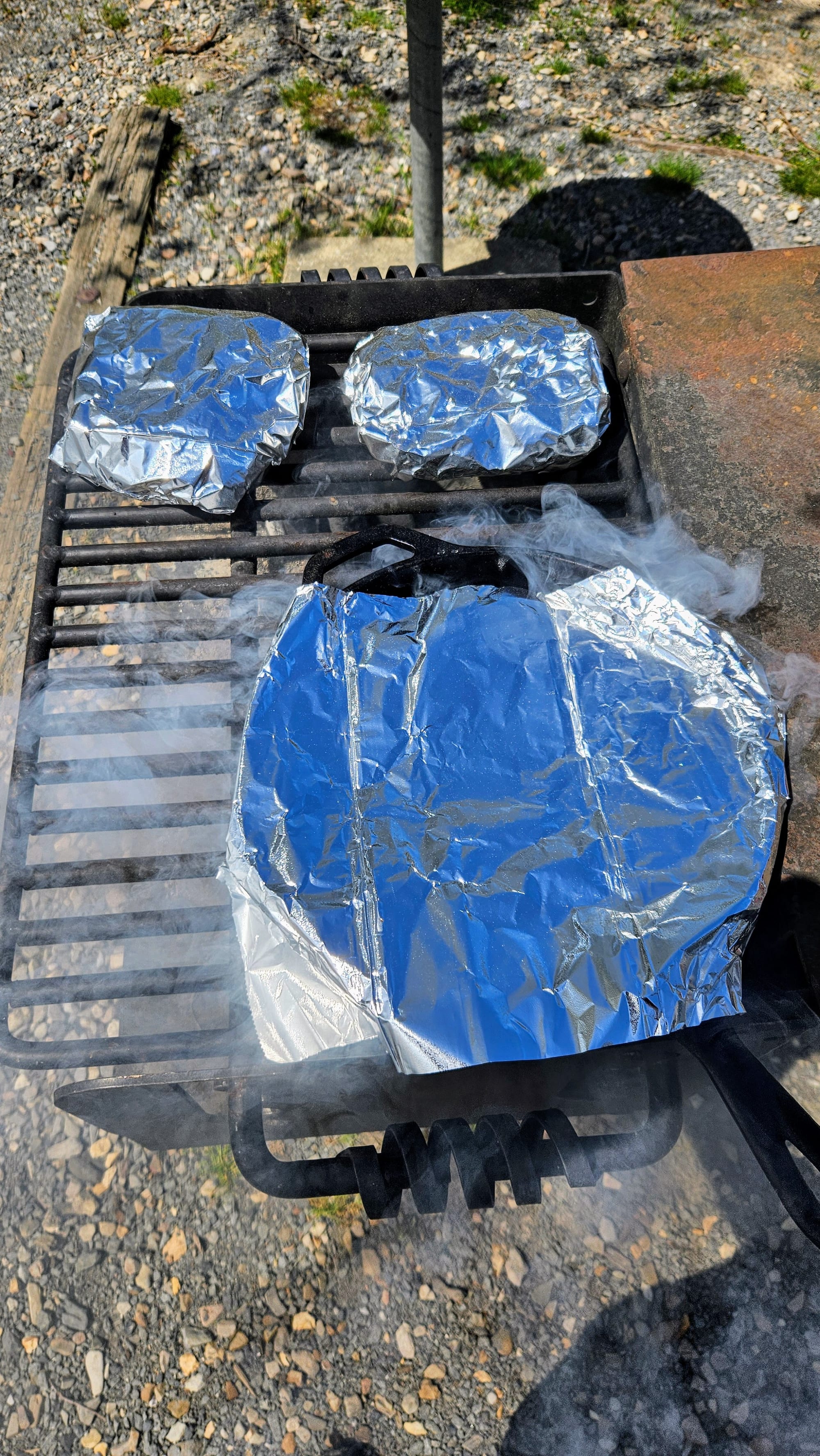
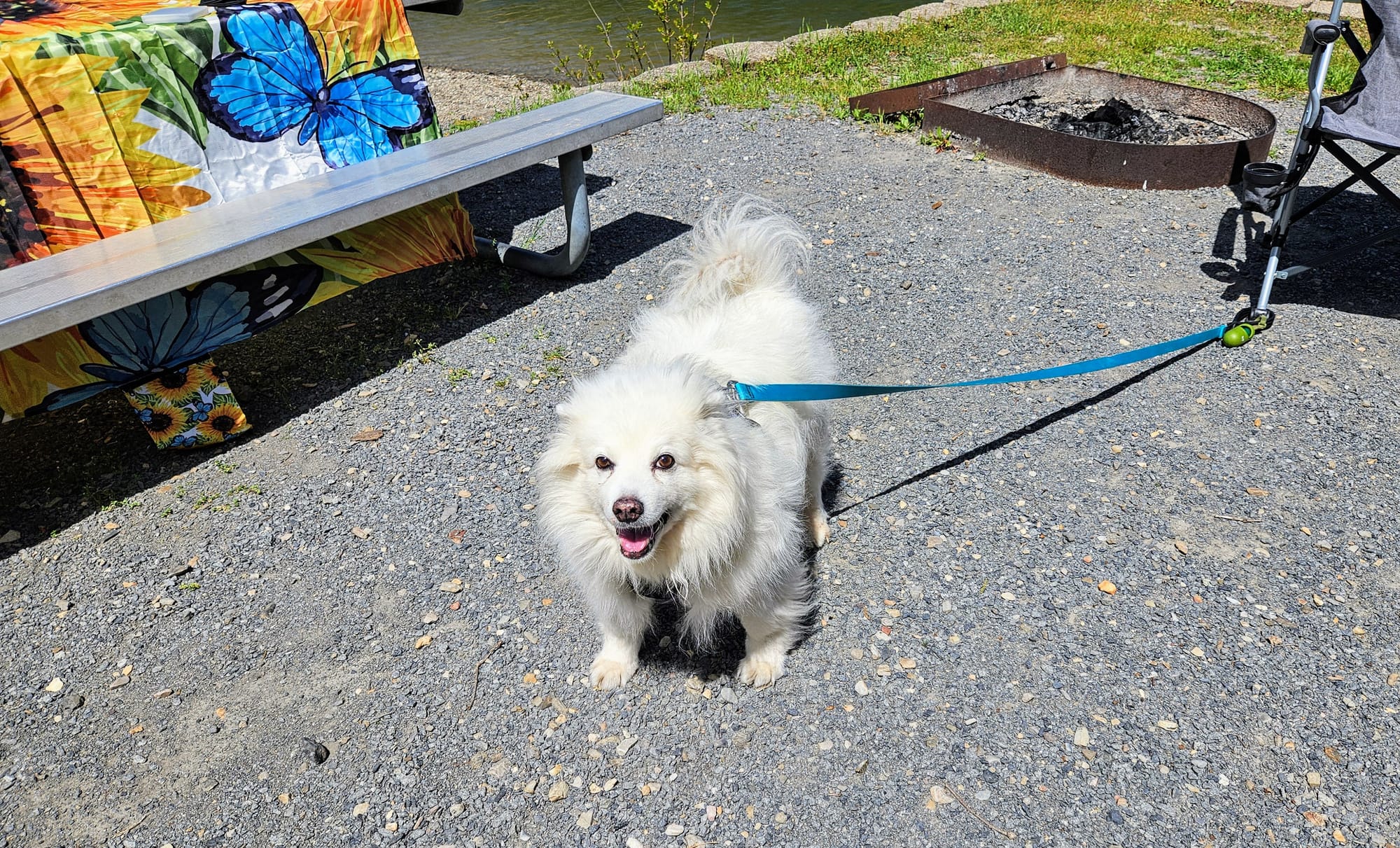
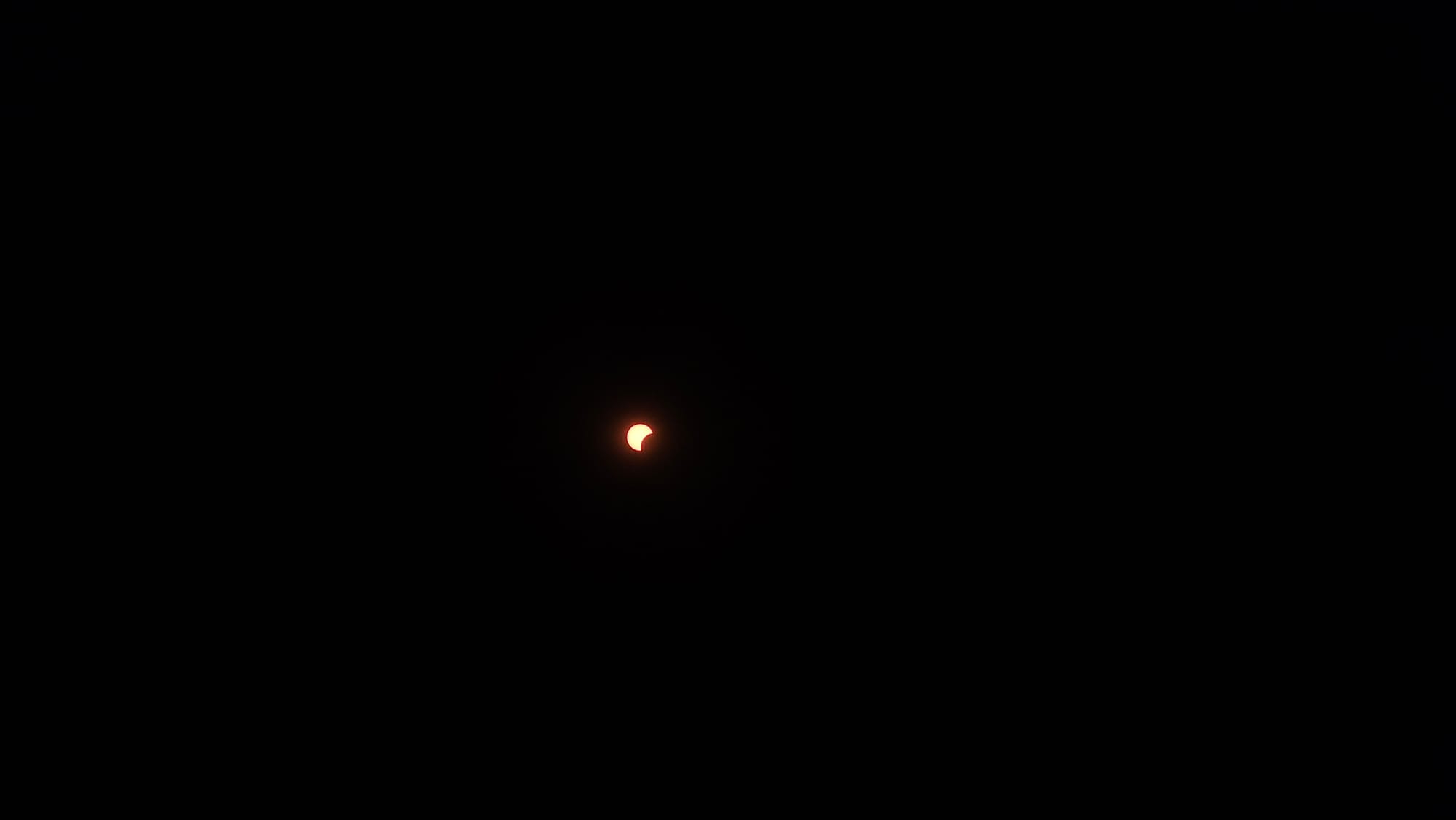
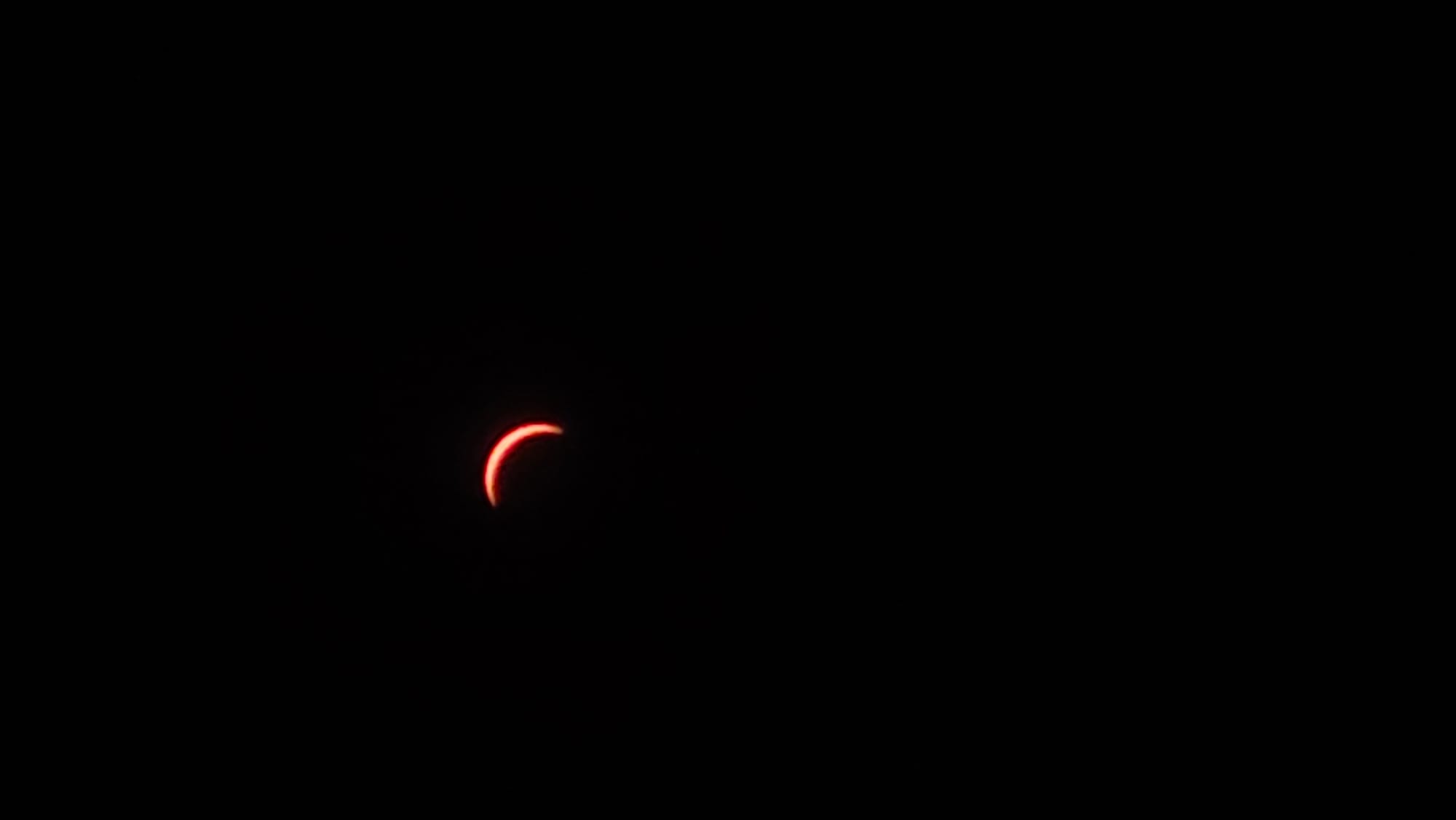
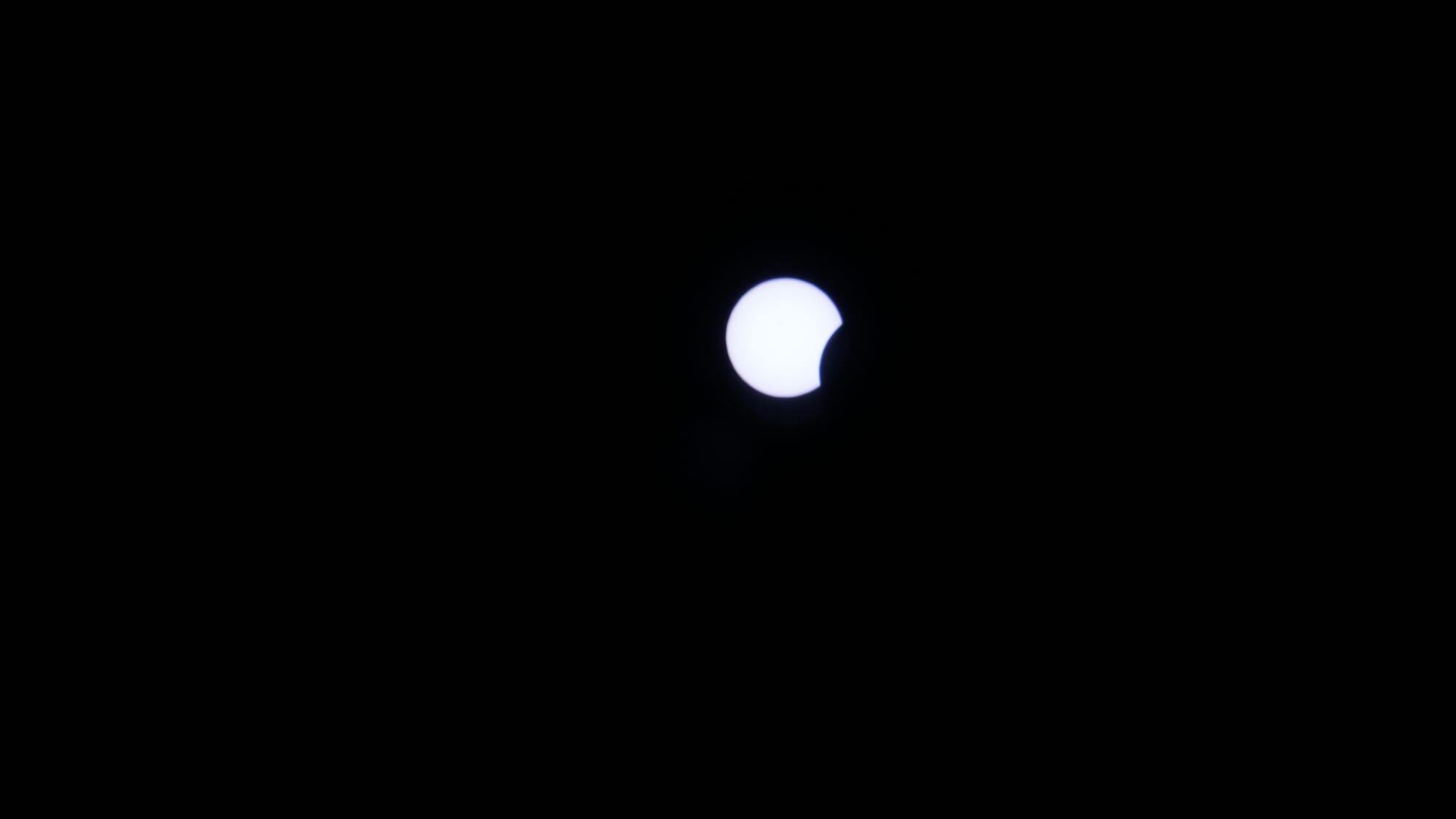
After a few successful shots with my mirrorless, the reflections reappeared.
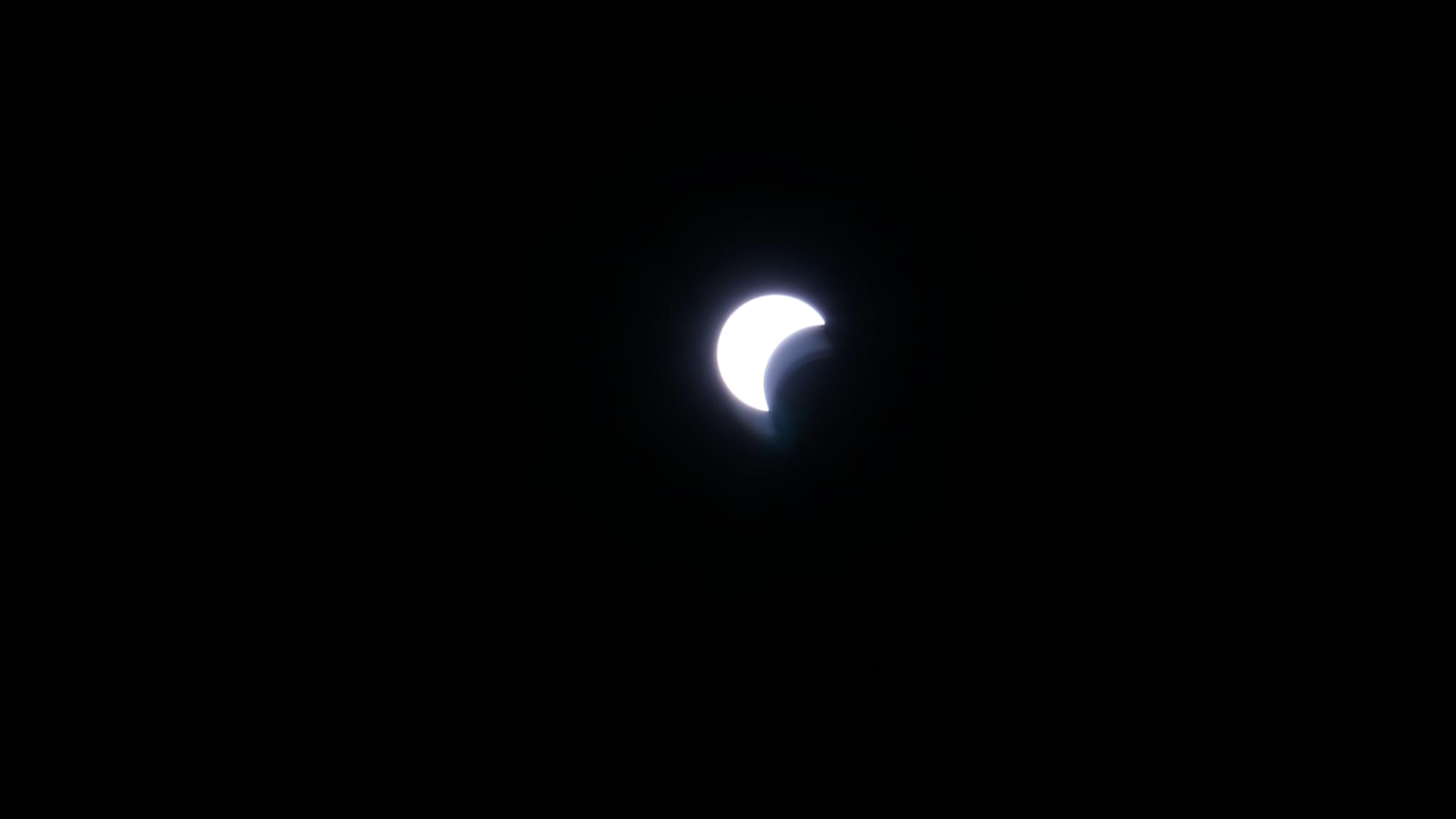
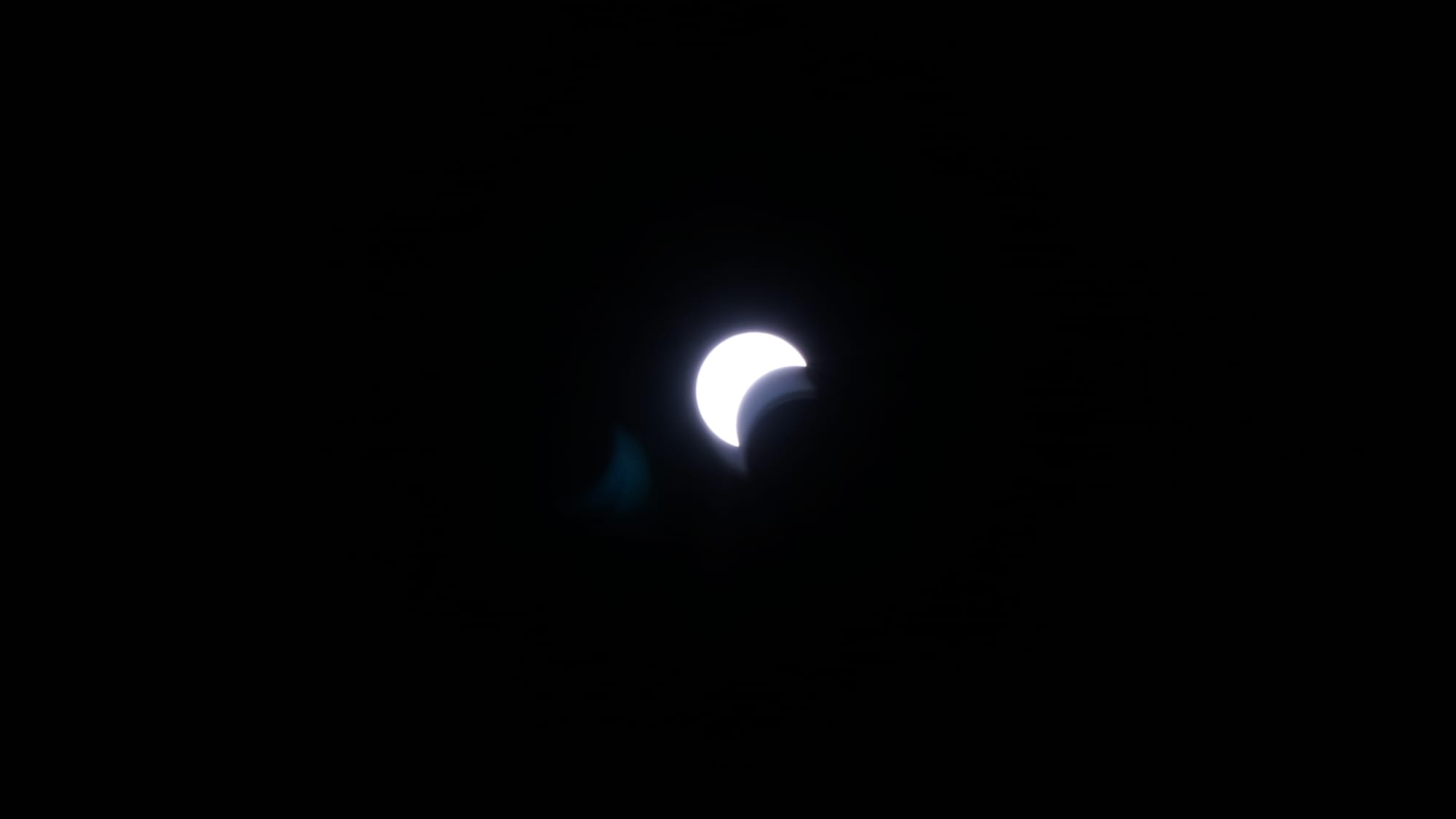
I was surprised that they appeared worse as the sun got more blocked, but it must have something to do with the amount of light the camera is letting in. I made a few adjustments, first to my shutter speed, then my aperture, and then my ISO, but nothing was helping. Then I remembered that I had my multi-stop ND filter on the lens. I tweaked that a bit and was able to eliminate most of the reflections.
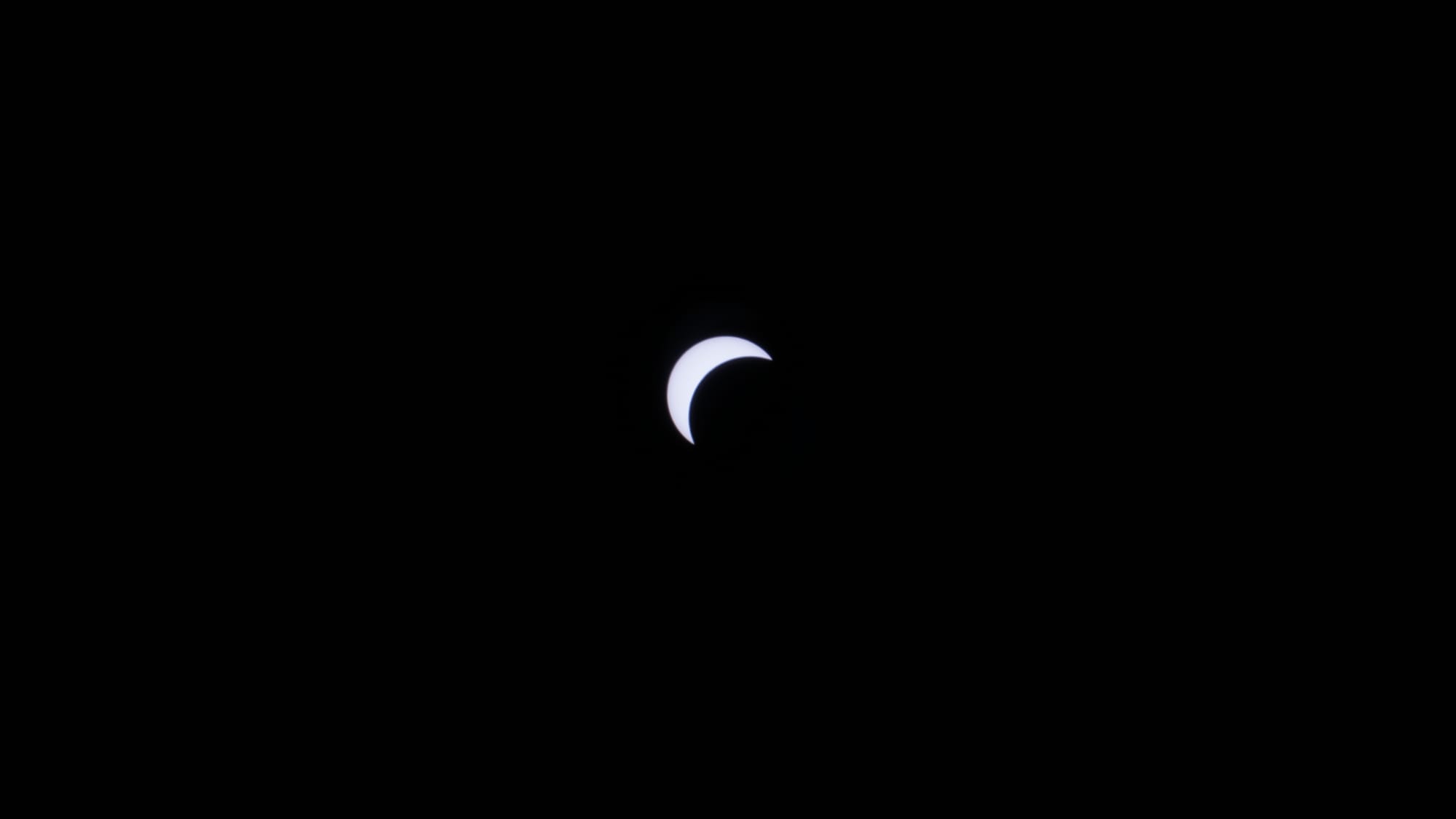
I snapped photos every 12-15 minutes to capture the various crescents of the sun. Then, as if we perfectly timed our meal, we got to eat shortly before totality set in. The best part about this was that we had been dealing with black flies, but as the temperatures cooled, the flies thought dusk was setting in and they went away! We were able to eat in peace, in the ambience of the dim light.
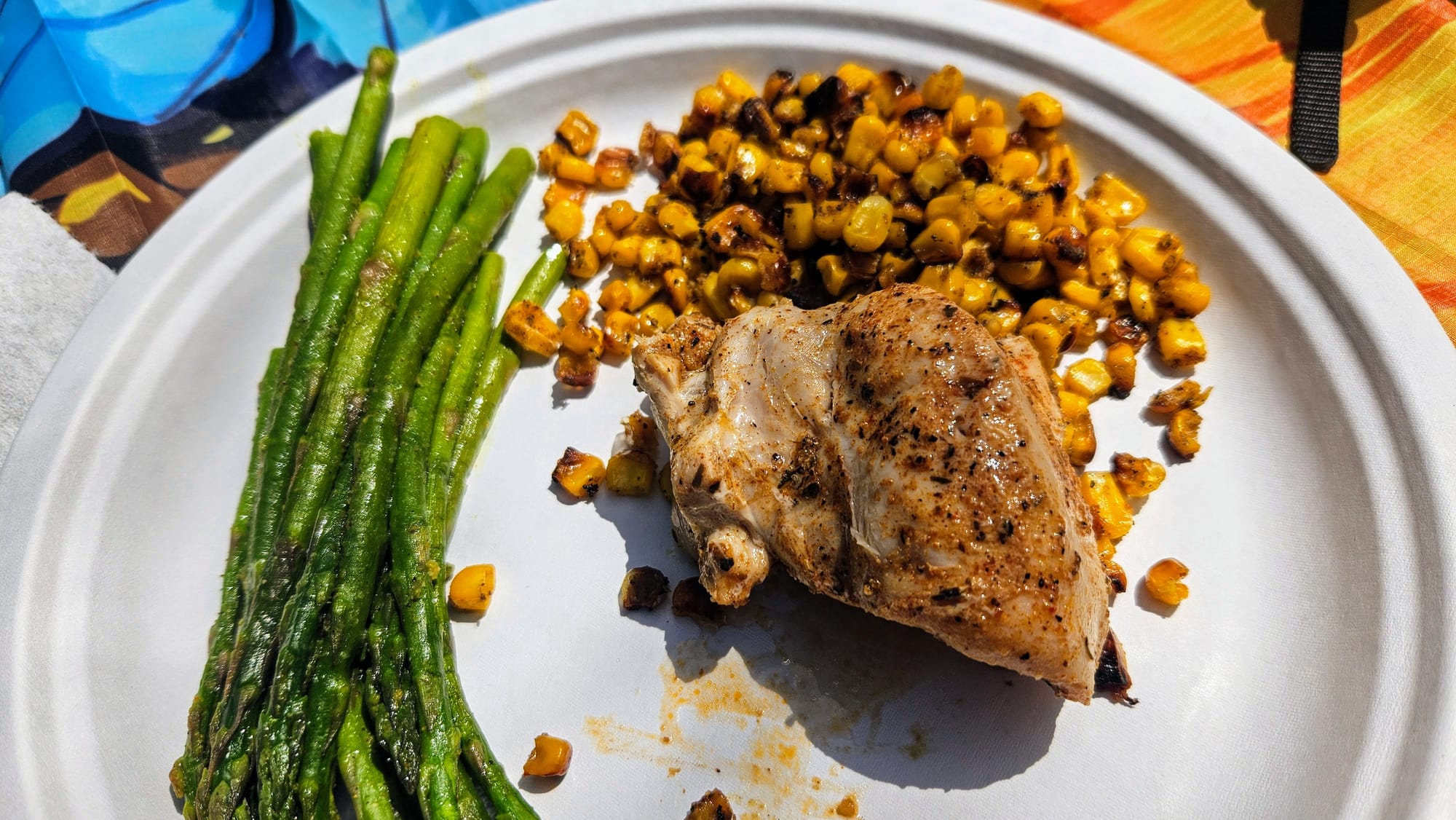
Before we knew it, the time was ticking toward 1:49PM and the last slivers of sun were dissipating. All of the experts were telling people that 99% totality won't cut it. 100% is where true darkness sets in, the sun's corona becomes visible, and the wild environment goes quiet with confusion. We knew the difference would be drastic, but it literally felt like God flipped a light switch. Those 3 minutes and 37 seconds were nothing short of miraculous.
When only the corona is visible, the sunlight scatters so that the earth's horizon glows. The darkness was reminiscent of twilight or pre-dawn.
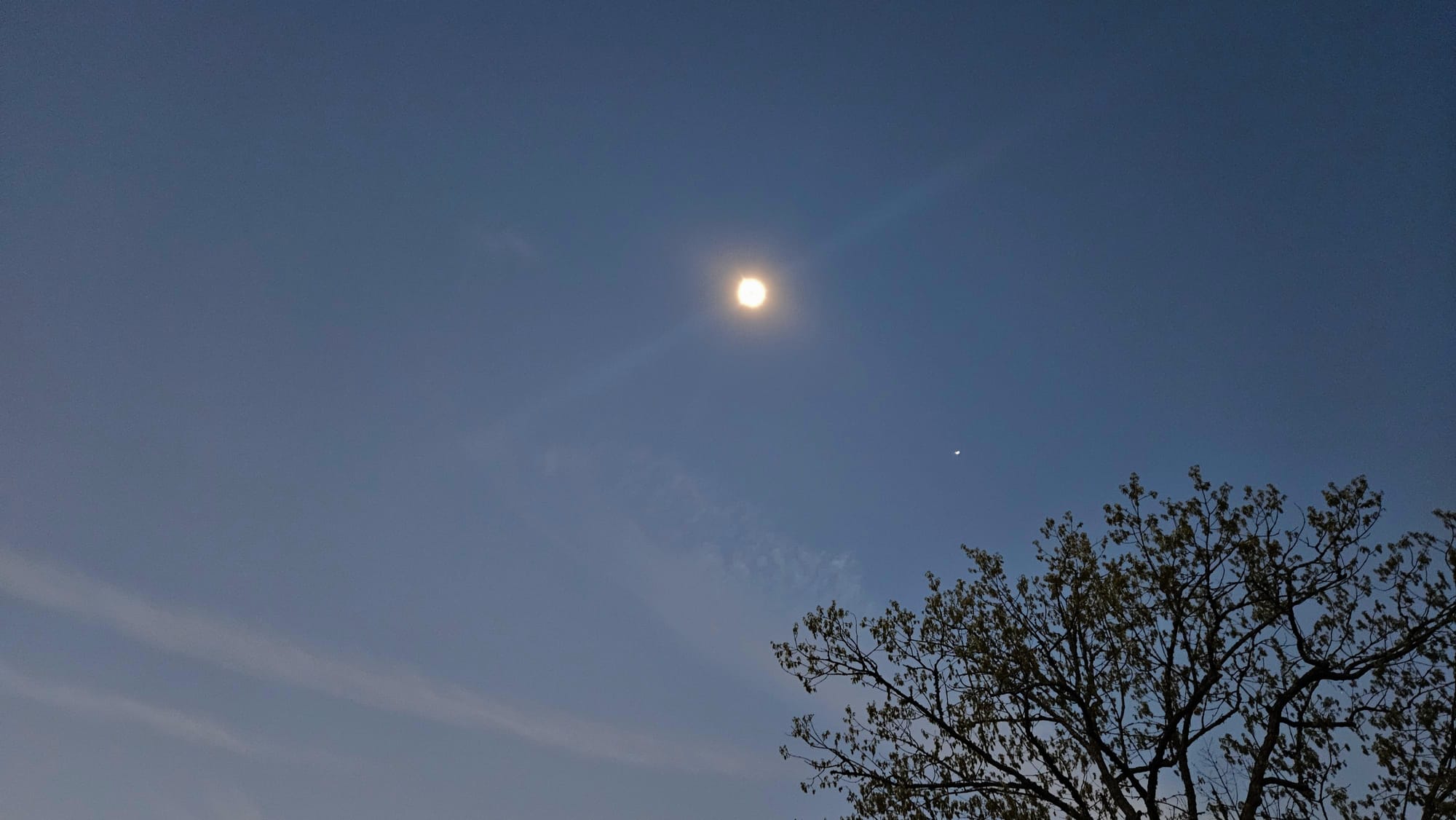
We were also treated to Venus and Mercury. Evidently a comet also flew by during totality, but we didn't see it.
I snapped a bunch of photos of the corona with my cell phone...
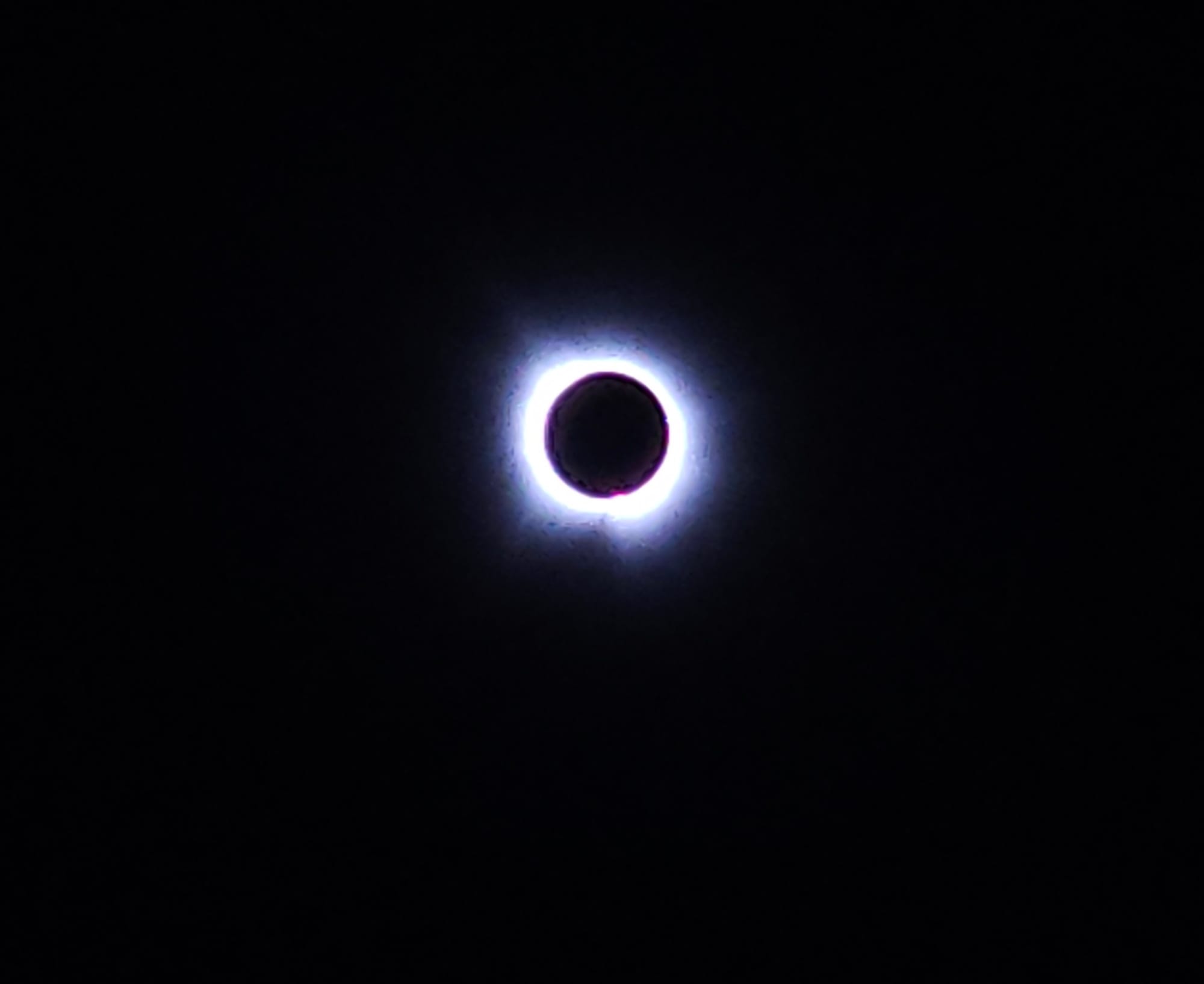
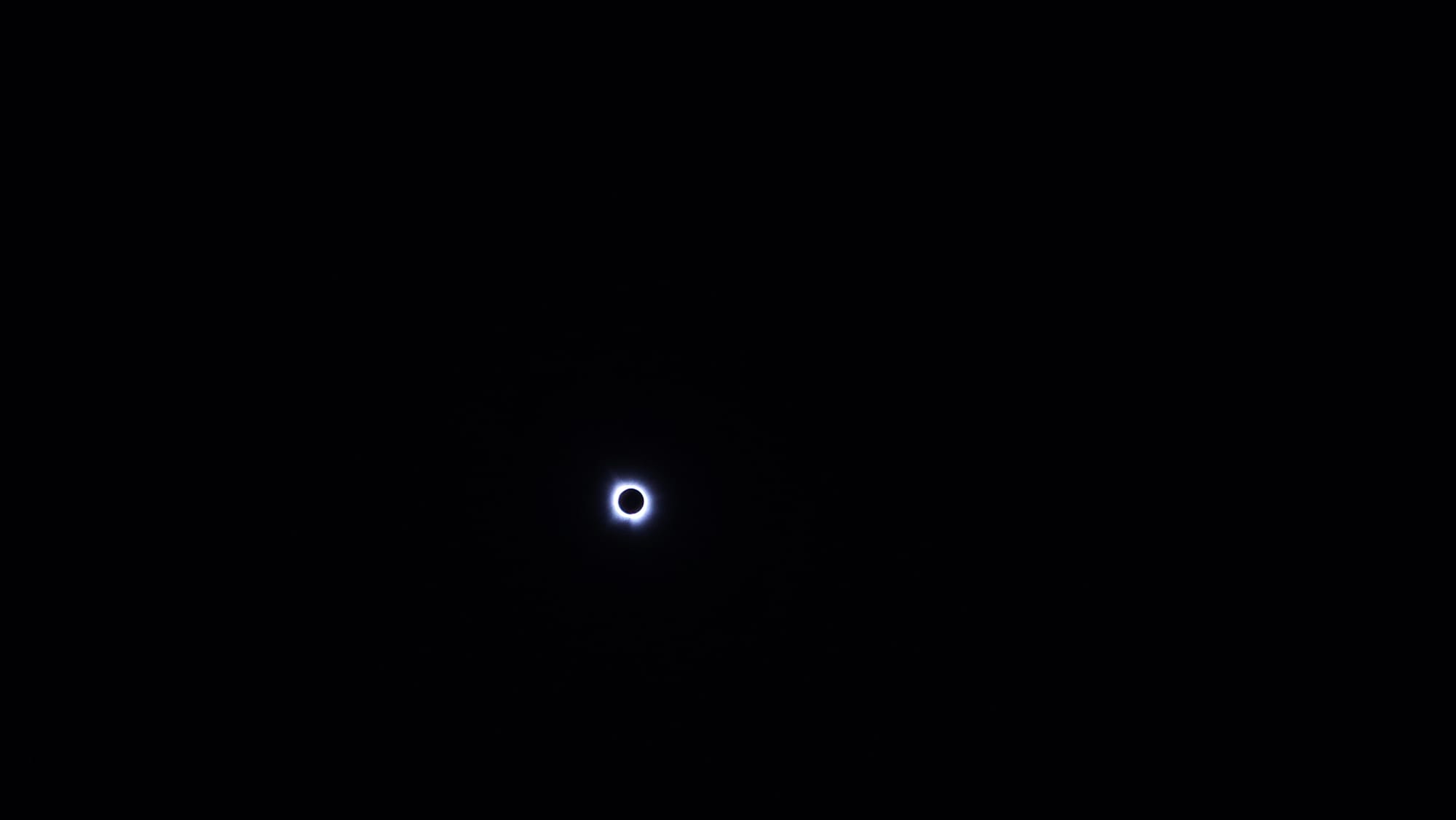
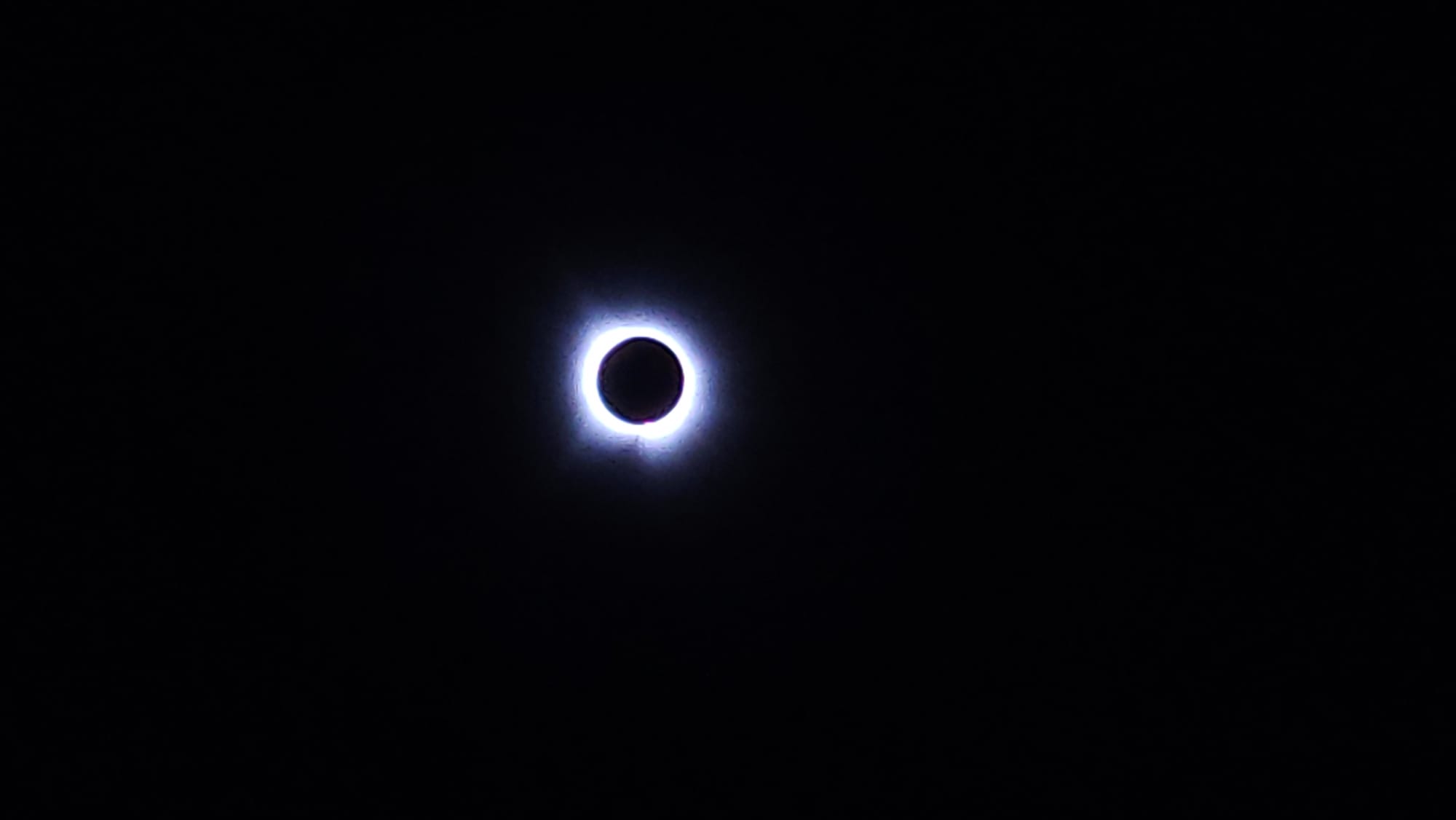
...and with my mirrorless.
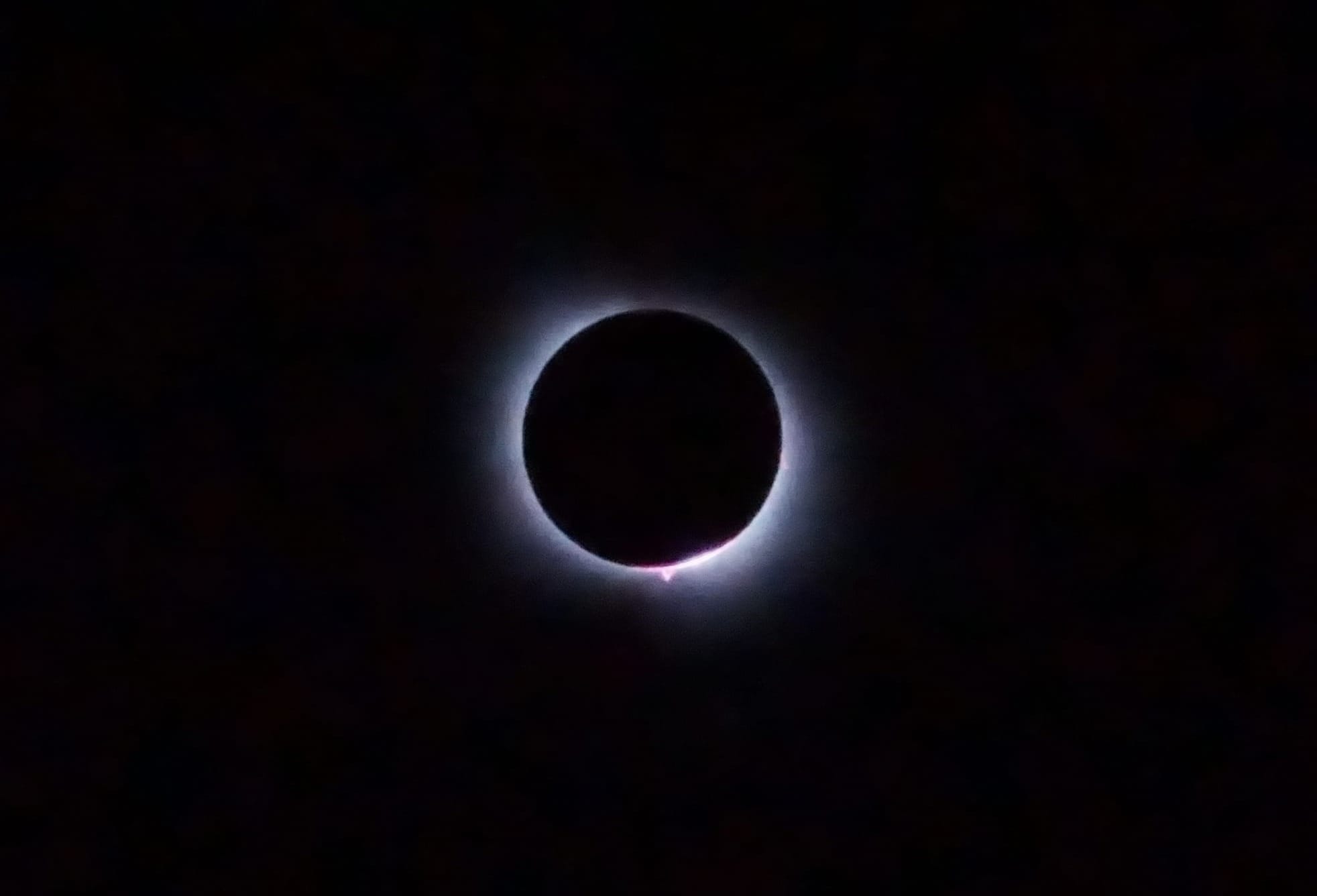
My mirrorless won that contest hands-down. In the above picture you can even see a solar prominence in the bottom center-right!
But the real winning moment was my last attempt to capture totality just before its end, and I caught the diamond ring.
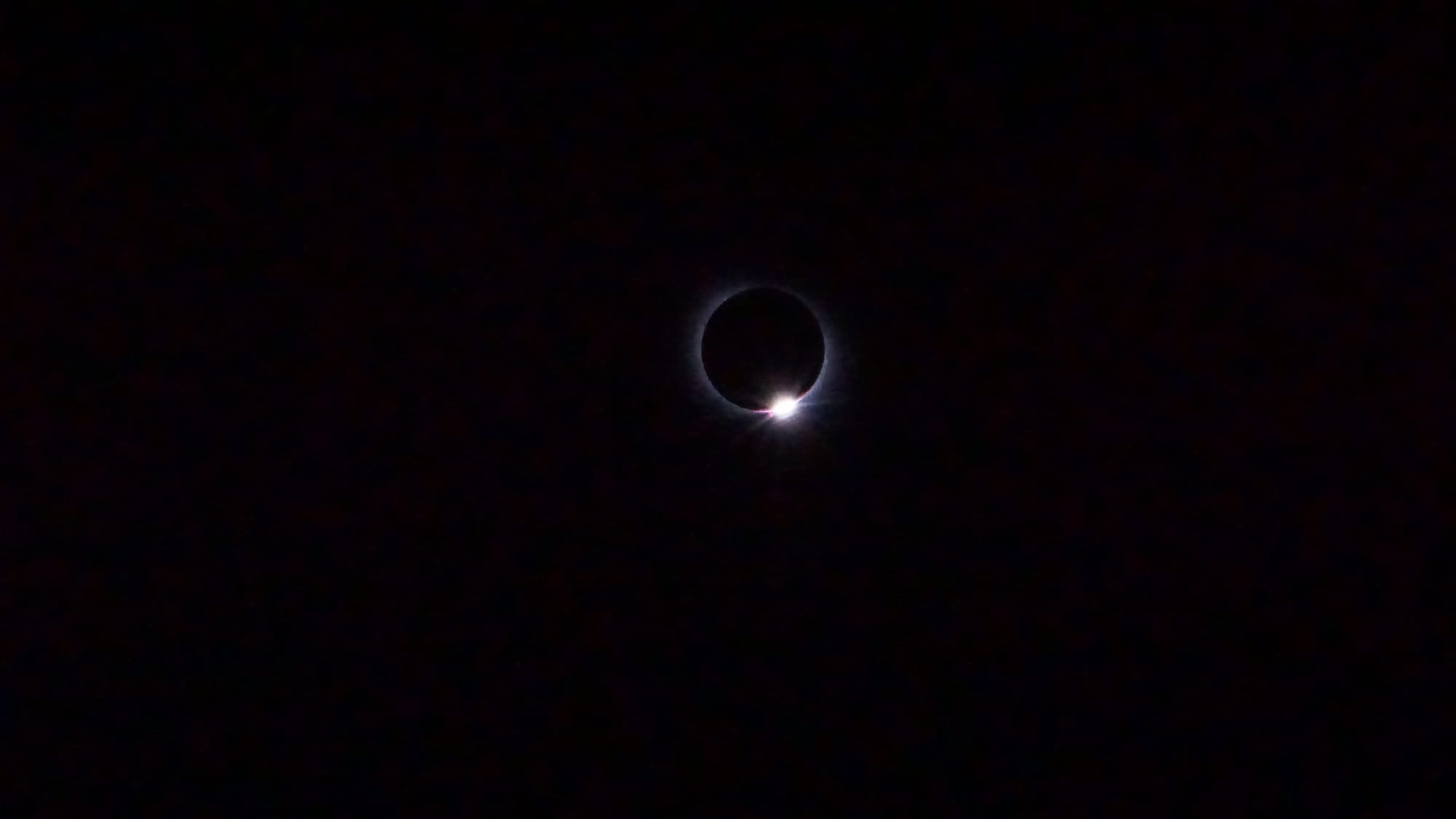
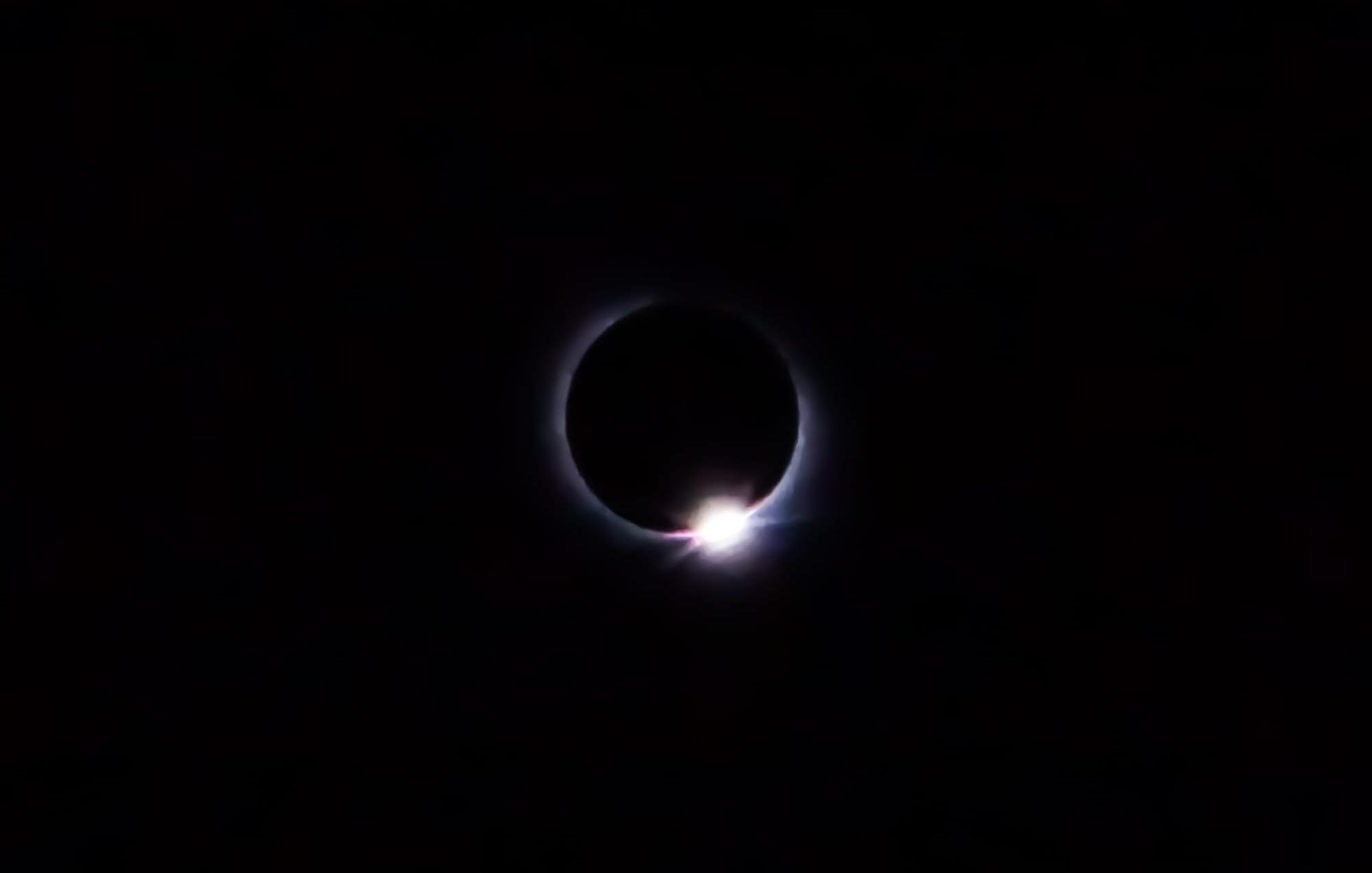
I wasn't even going to attempt the diamond ring because my overwhelm was high enough. Typically one needs to do a burst shot, which will take many photos in rapid succession. There is only a window of a few seconds where the sun's edge is in the exact right spot, so burst shooting maximizes the chance of success. I didn't burst shoot. I took one shot and lucked out big time. (The above photos are the same shot, but one is cropped for a closer look). It's not the clearest photo, but the photo exists, and that's what's important to me.
We stayed outside to watch the second half of the eclipse. I continued my sporadic photos, and all the flies arrived back to our campsite after their very short siesta.
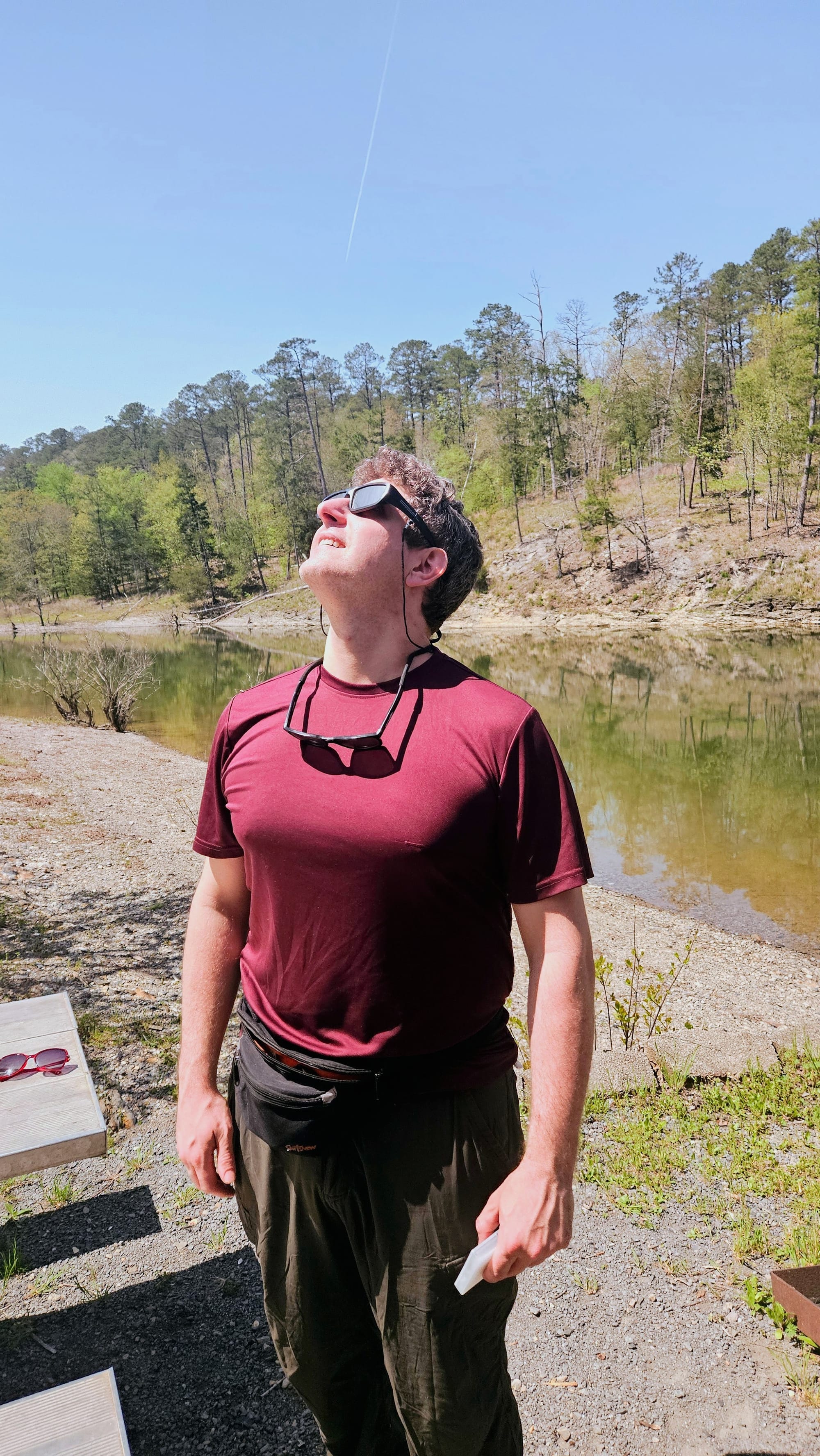
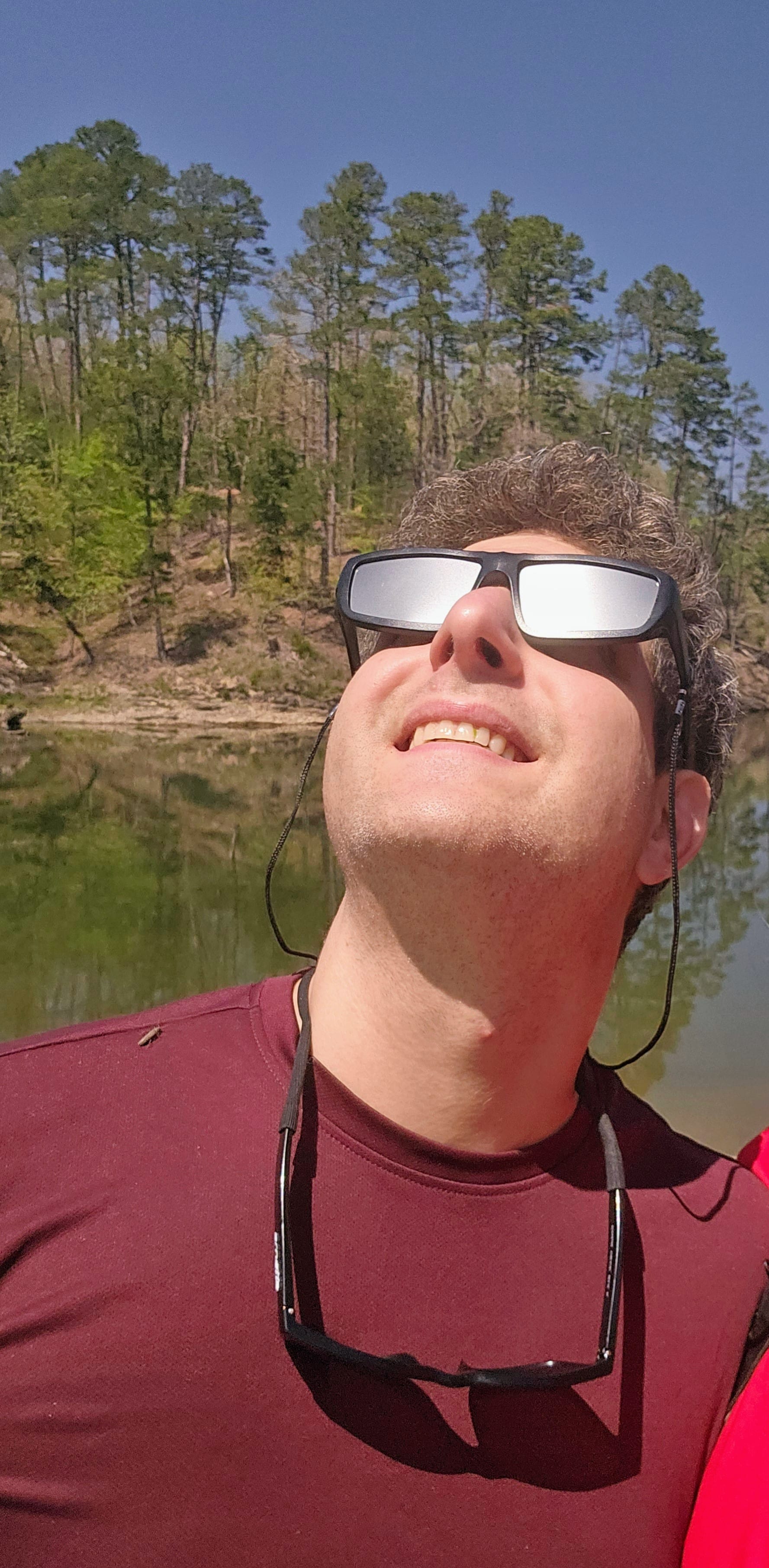
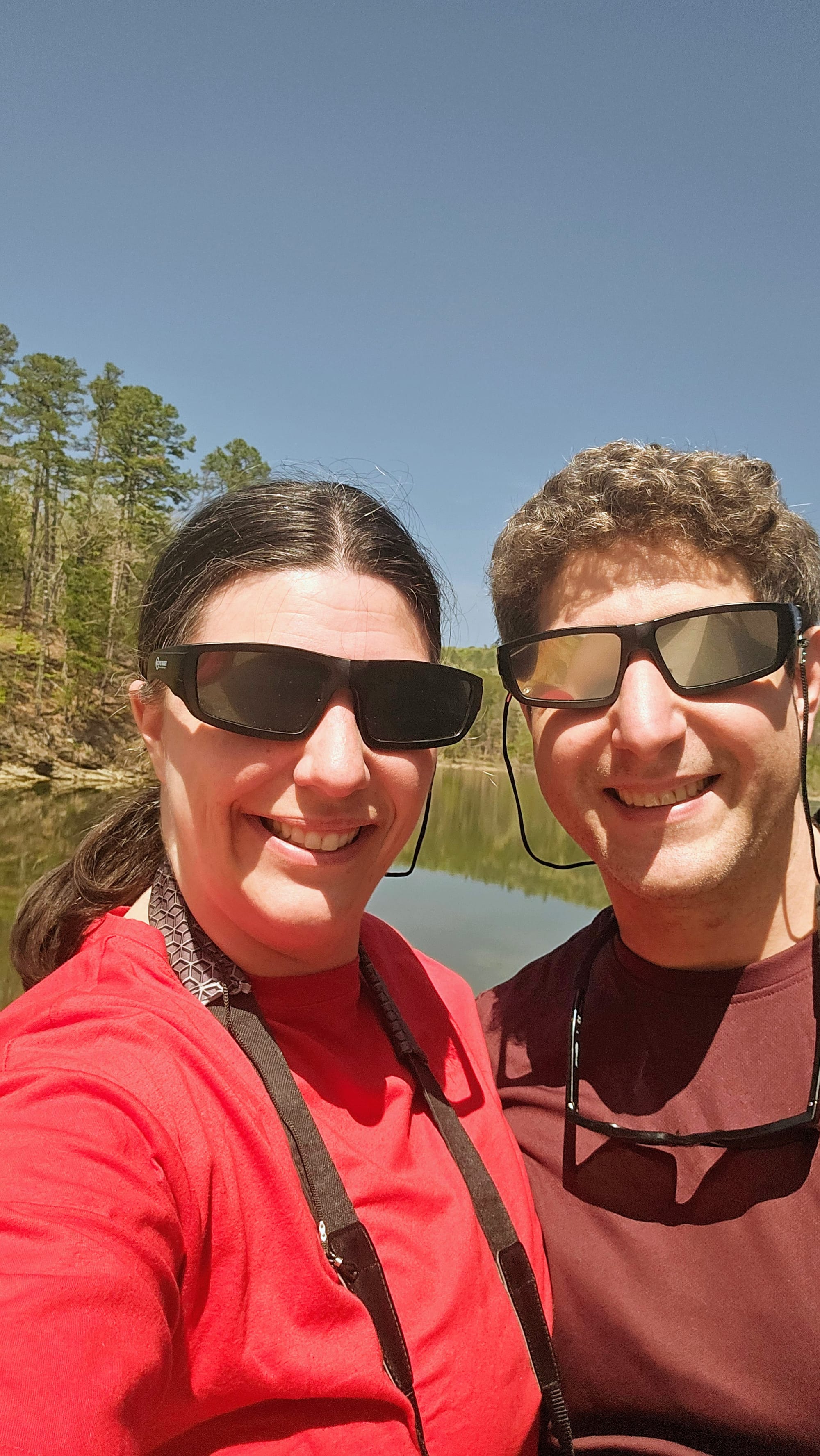
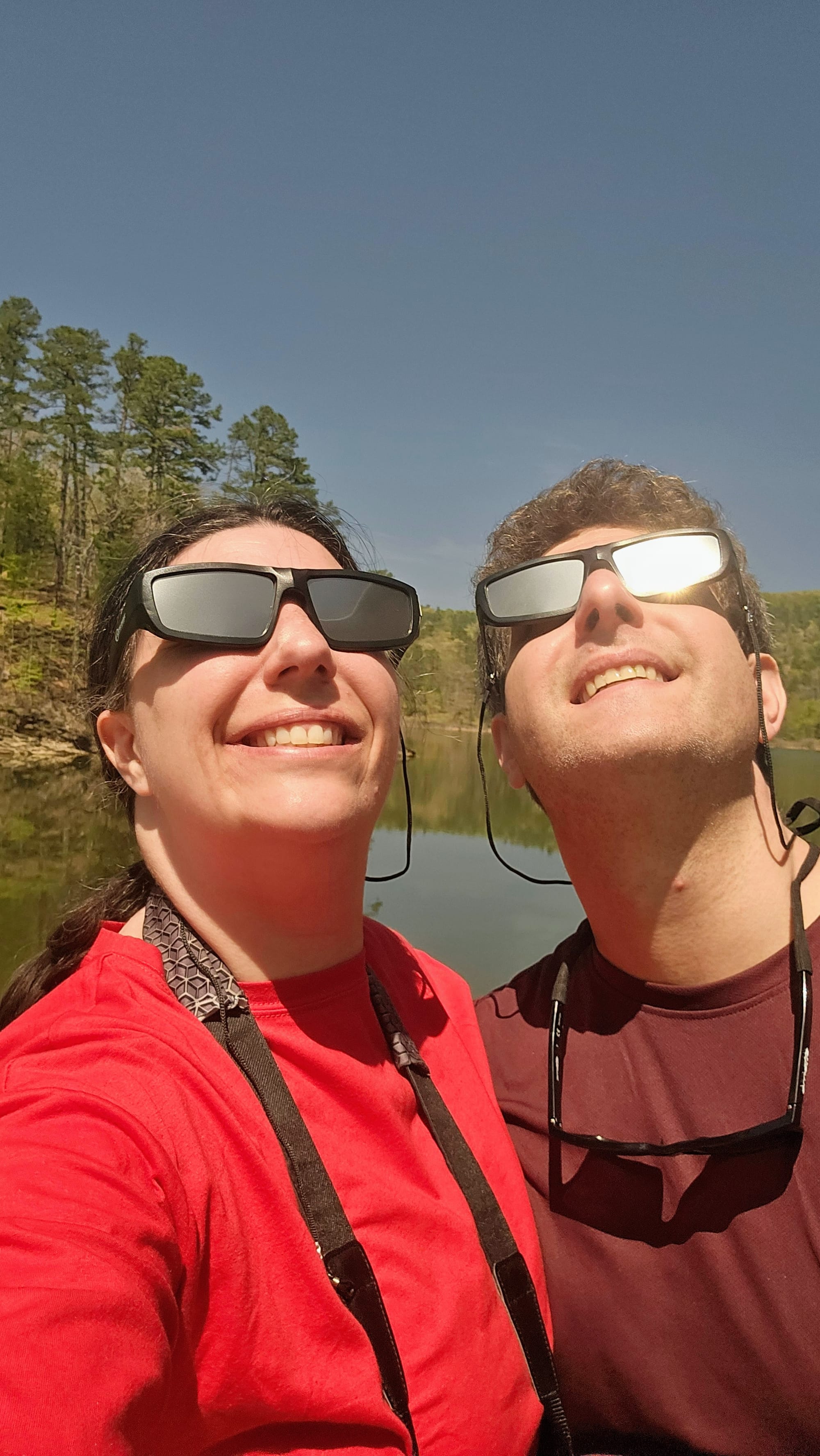
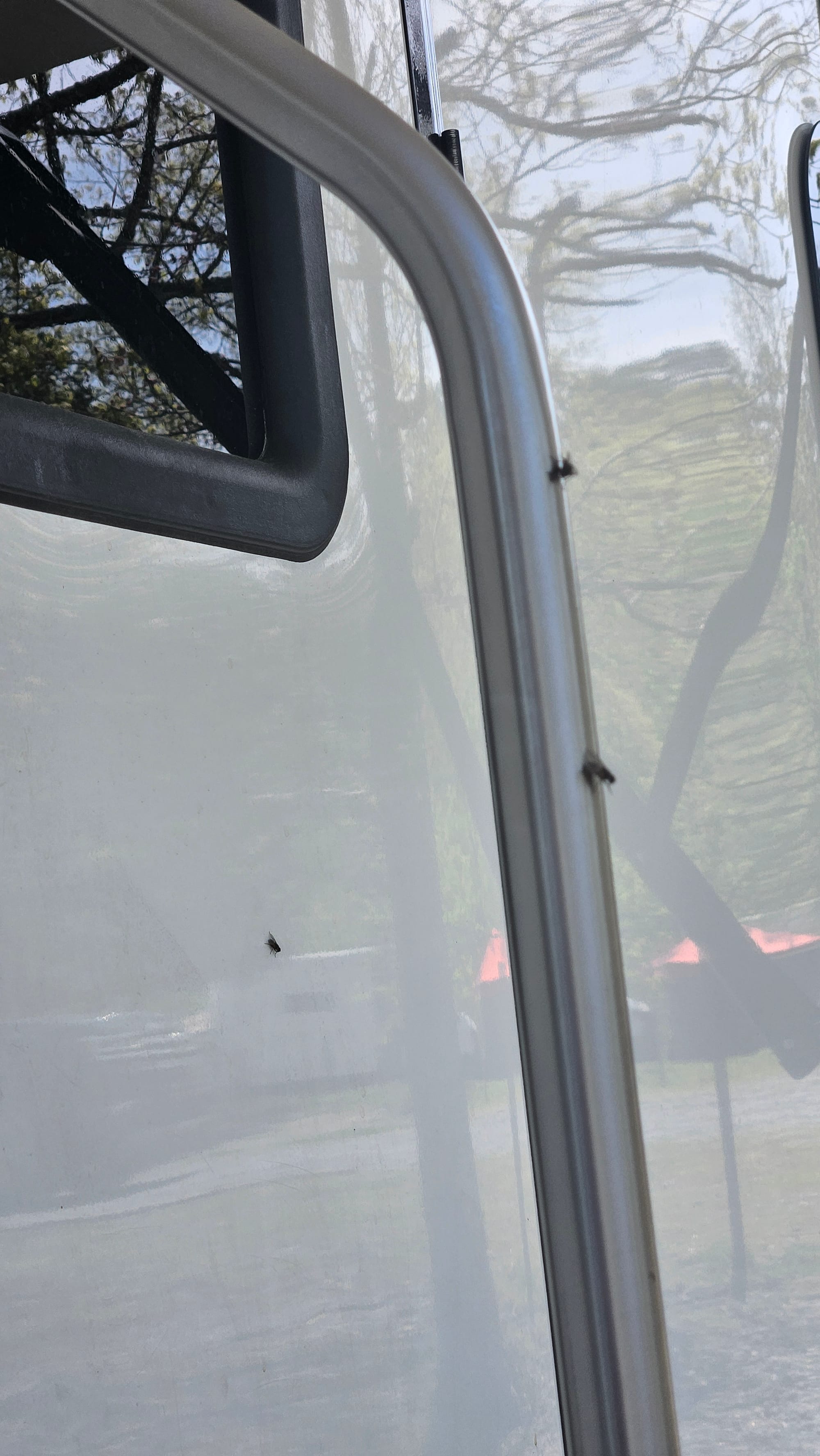
I may have settled for my mediocre equipment, but I did learn something new in the six months since the annular eclipse. I found a photographer who used low aperture without a solar filter to create a diamond effect around the sun during the eclipse. I figured since my mirrorless was solar filterless, I would fiddle around with the aperture. When I shoot with my phone, I use pro mode, which allows for some manual adjustments, but I cannot change the aperture (how much light is let in) because the lenses are not capable of this. With my mirrorless, however, I have played around with low aperture in the past, which when capturing the sun, makes the rays much more defined. I wasn't able to capture the diamond shape that this photographer had, but I did get some cool crescent reflections shooting out of the sun's rays. Sometimes purposely using the reflections works!
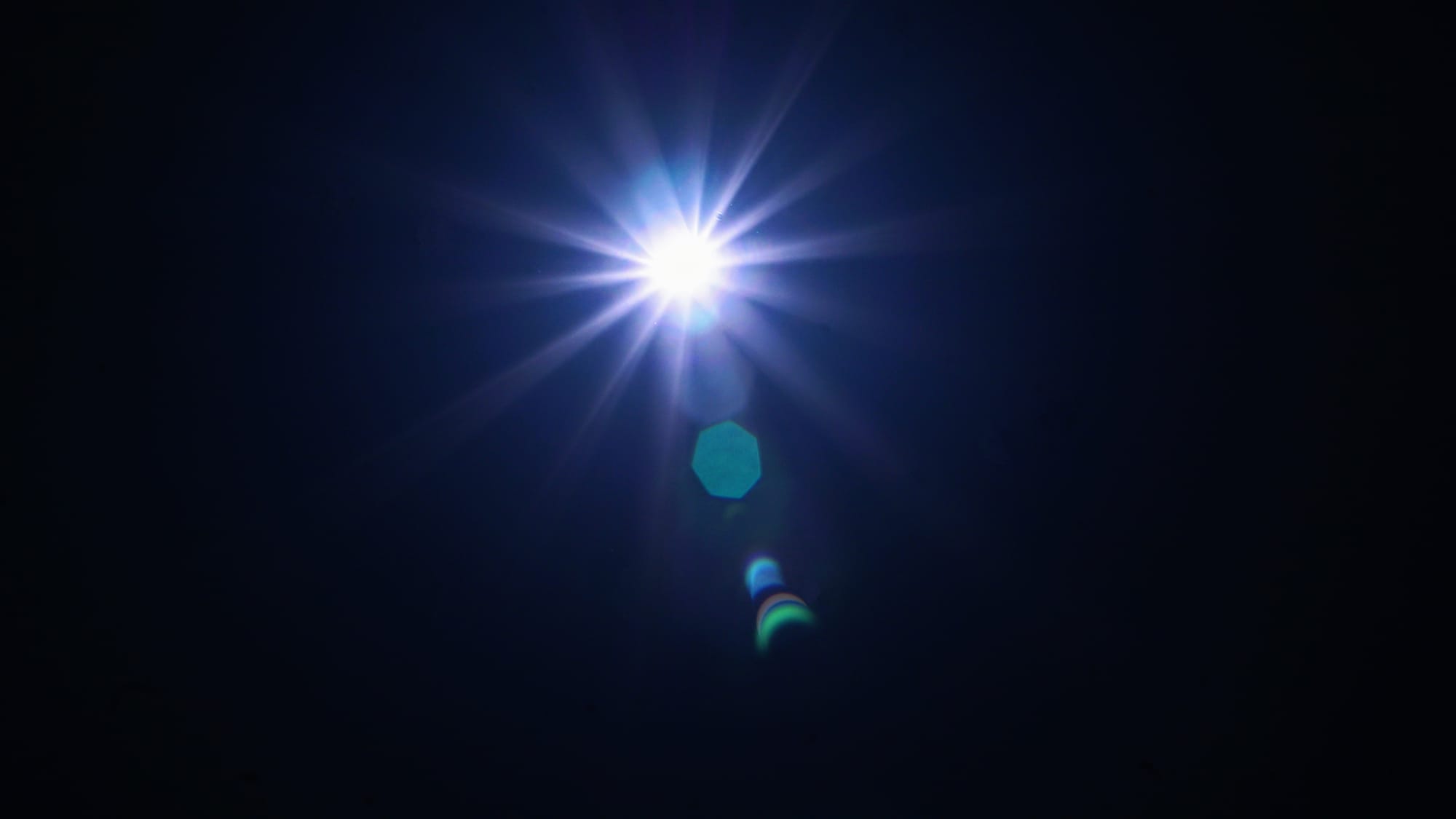
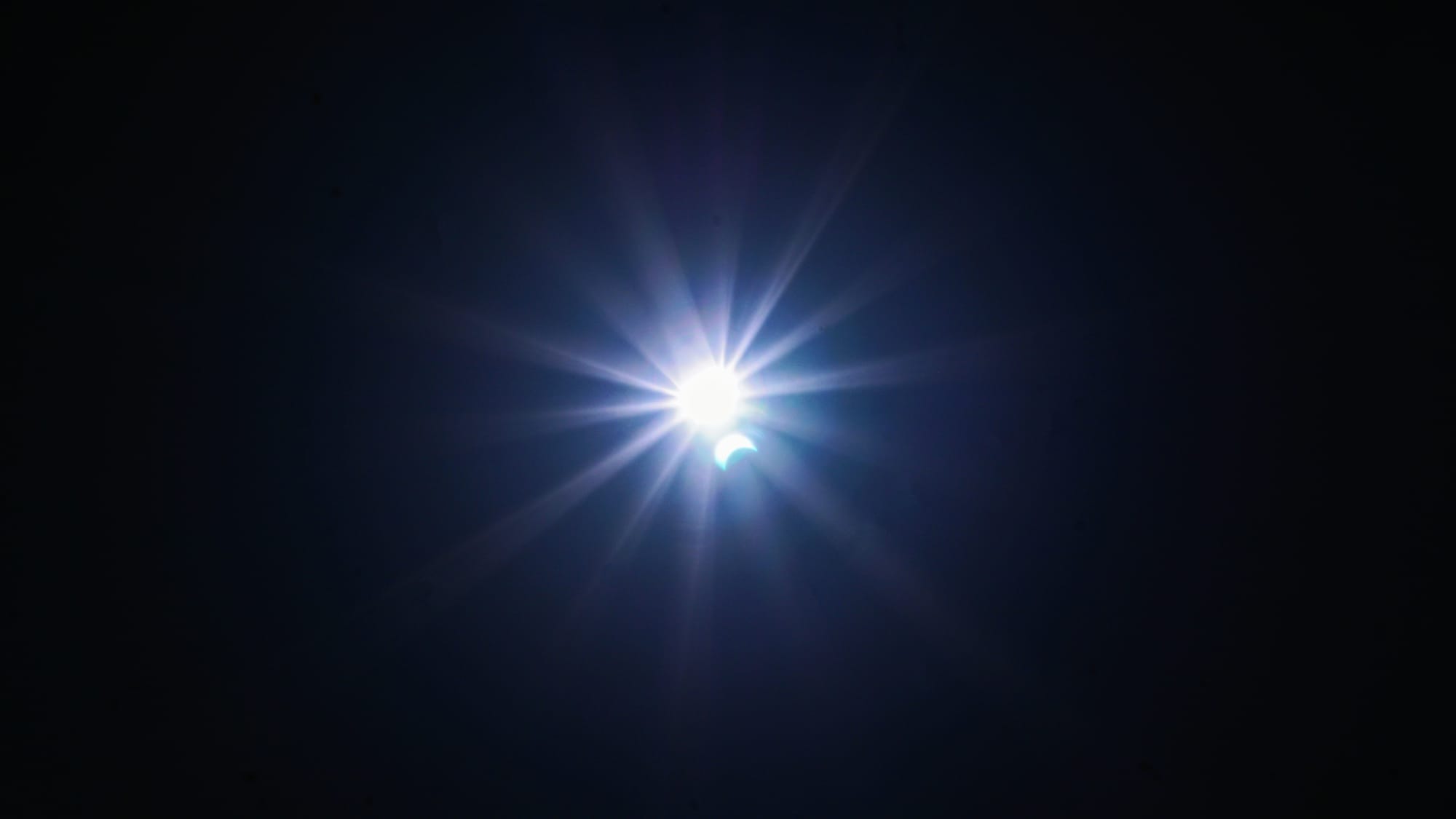
As for my composites, I don't quite have the expertise to pull them off, nor do I have the proper editing software. However, I did have some fun.
This first edit I call the "poor man's timelapse." I didn't set my camera up on timelapse for two reasons. First, I wanted to be able to take pictures when I wanted, without my camera being tied up in its own process. Second, and most importantly, without a solar filter, I didn't want to risk burning the optics of my camera if it faced the sun continuously for three hours. So instead, I took a selection of the shots I snapped every 12-15 minutes. The settings are inconsistent, as are the shapes. Notice the second from the left has reflections. This was the last shot I took before I successfully adjusted my filter to get rid of them.

I had a little more consistency with my cell phone, mostly because the settings remained the same the whole time.

My mirrorless has a mind of its own sometimes, so half of the shots I got were white and the other half were periwinkle. I was able to manually override this by changing the exposure, but sometimes the periwinkle would show up for no obvious reason. I kind of loved the color, and so I created a composite of those too.

I couldn't do much with my foregrounds, especially in terms of creating something realistic, but I did end up making some "eclipse over the rig" art.
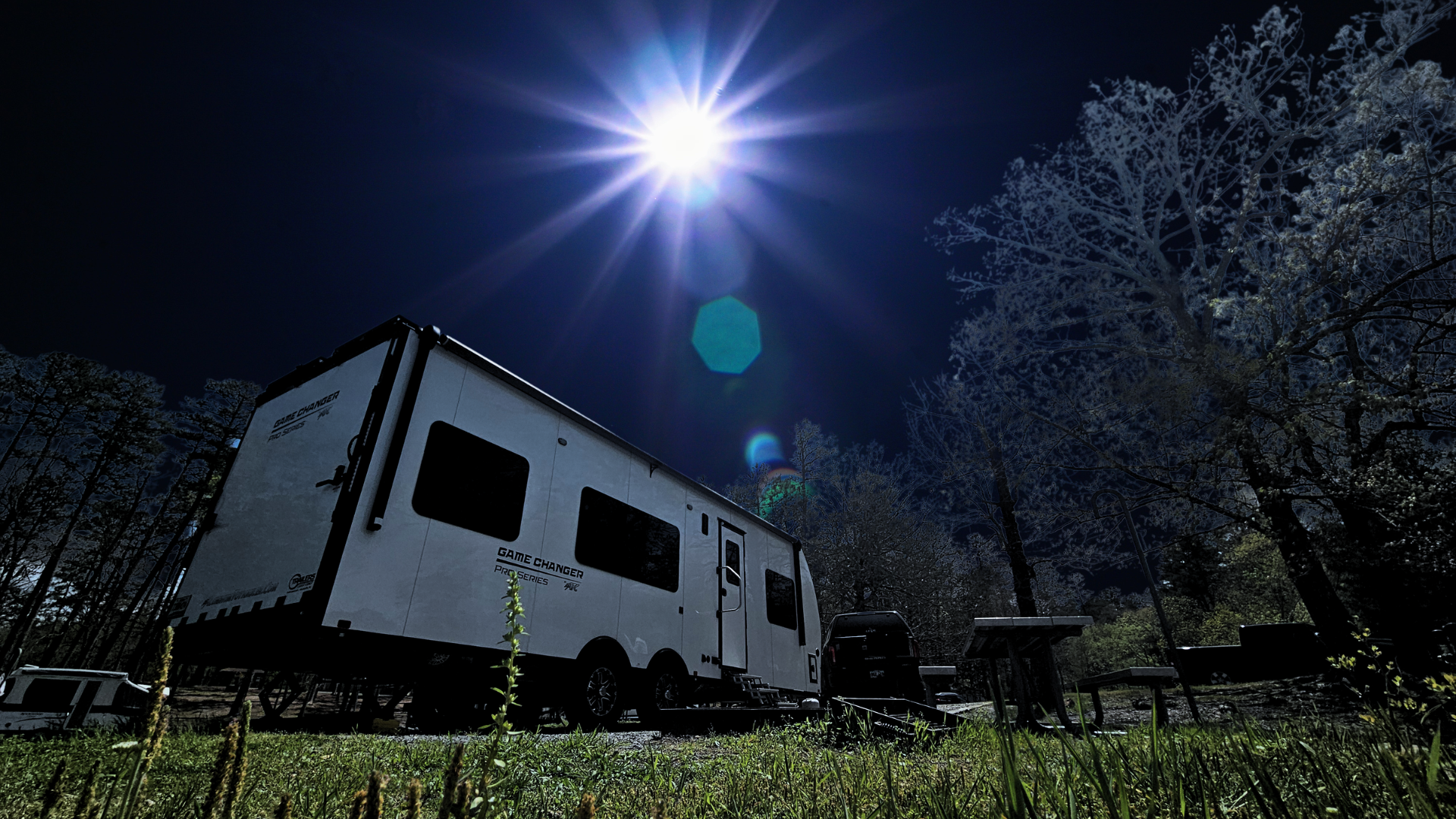
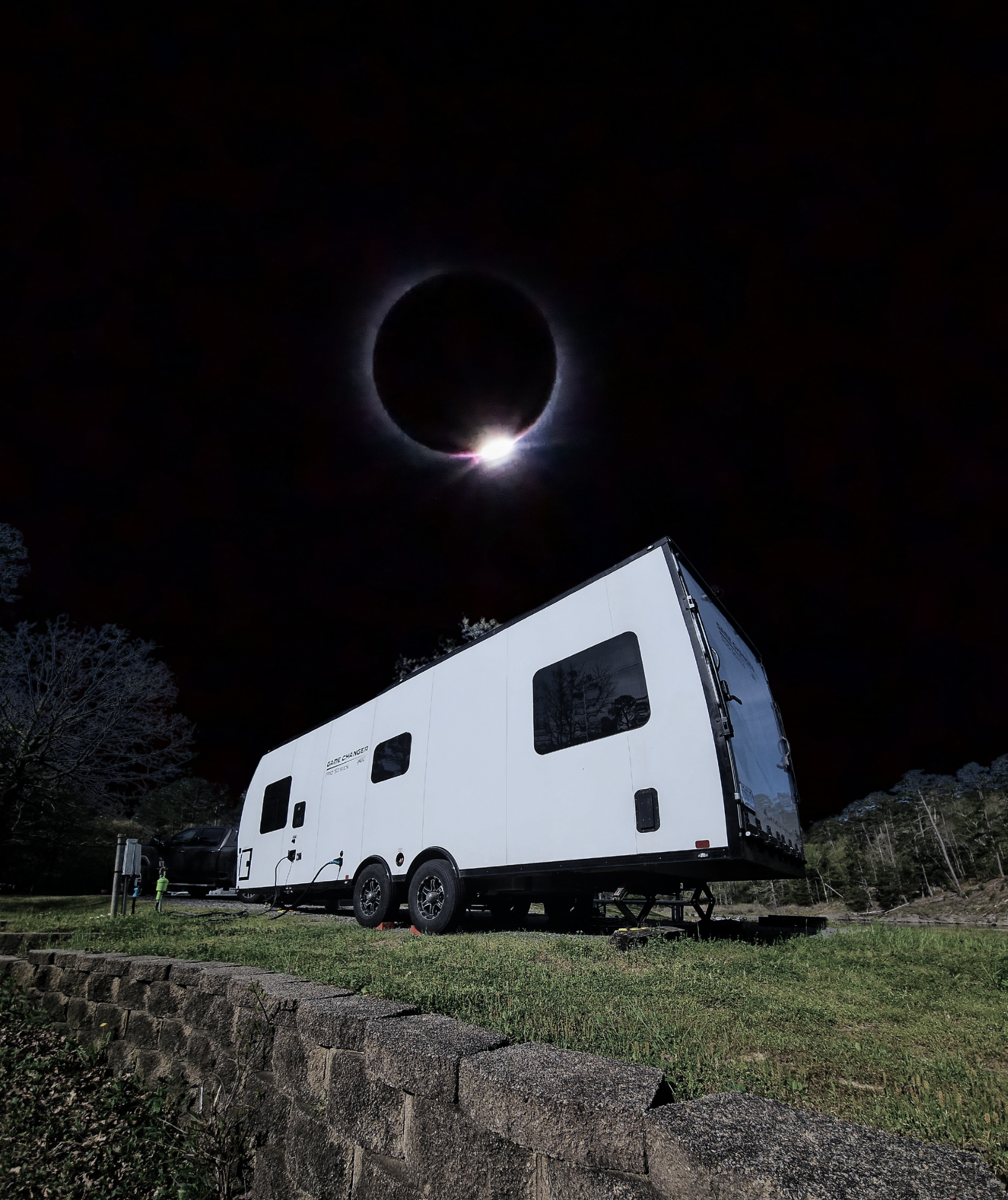
And the post's cover photo? A composite using my foreground and a free license background, for no other reason other than it captures the essence of our experience.
And what an experience it was! Truly unforgettable, and we couldn't have asked for it to turn out better. That's another check off the bucket list, and one heck of a grand finale to end our time at Crystal Springs Campground.

